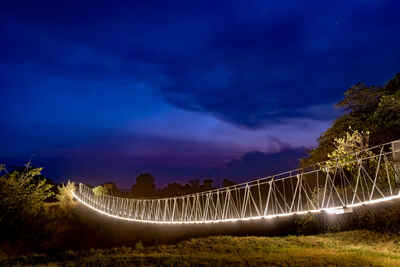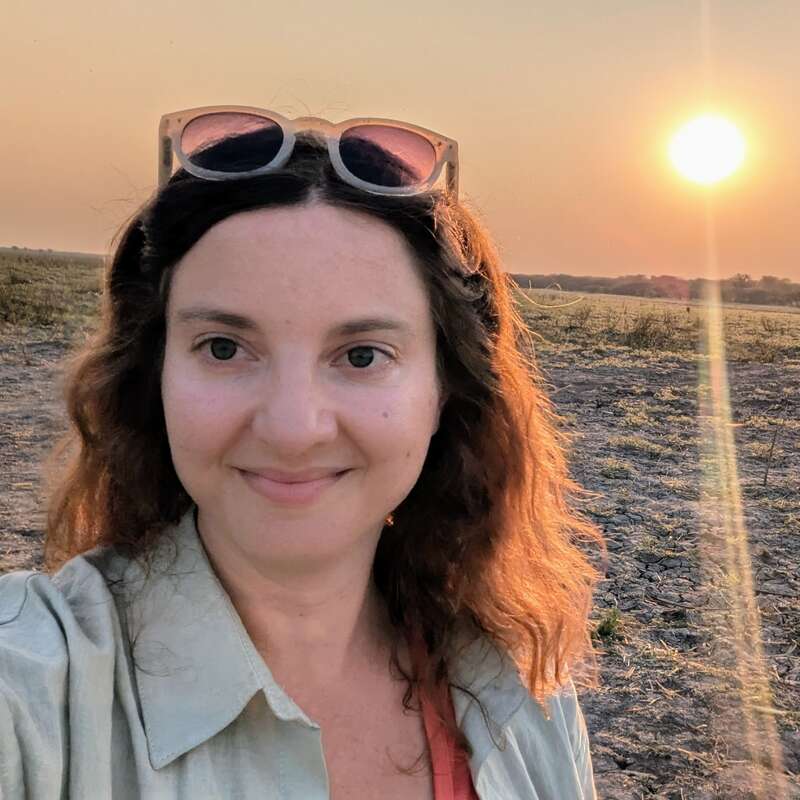About Ilkeliani Camp
Ilkeliani, which means Young Maasai Warrior in the Maasai people’s Maa language, is a smart, elegant camp ...
... overlooking the Talek River, just outside the Maasai Mara National Reserve.
The camp has access via a private footbridge over the Talek river directly into the Maasai Mara National Reserve. The camp's safari vehicles park on the reserve side, which puts it in a convenient location for game drives in the Sekenani sector of the reserve.
We really enjoyed our stay at Ilkeliani Camp and were pleasantly surprised with the standard of the tents. The staff were very welcoming and friendly, and nothing seemed to be too much trouble.
Accommodation
12 tents
Children
Best for 8+
Open
All year
Activities

4WD Safari

Birdwatching

Cultural excursion

Hot air ballooning

Private activities
Traveller reviews of Ilkeliani Camp
2 real, un-edited reviews from Expert Africa's travellers.
Arrived 5 Aug 2024, 3 nights
"Ilkeliani Camp review"
Overall rating: Excellent
Arrived 18 Mar 2024, 4 nights
"Ilkeliani Camp review"
Overall rating: Excellent
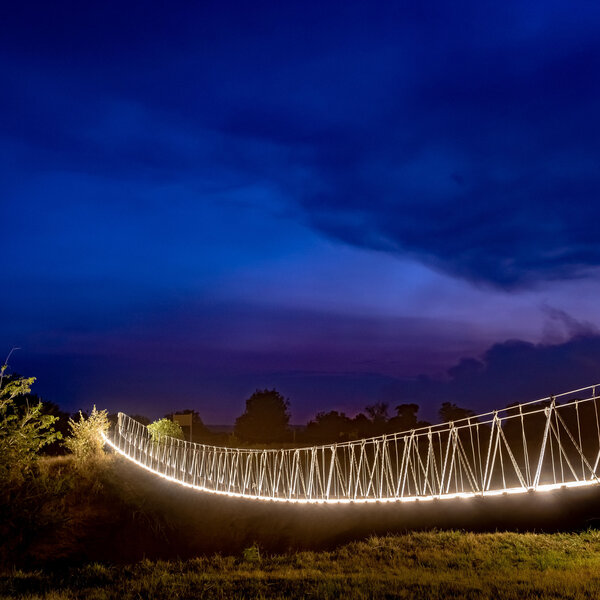
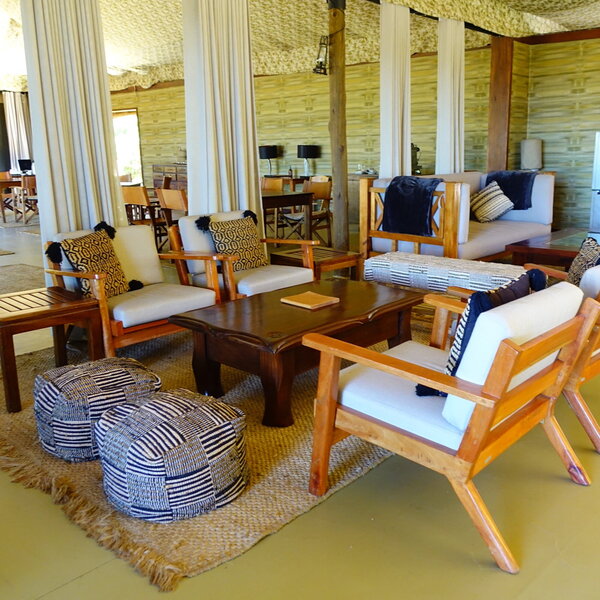
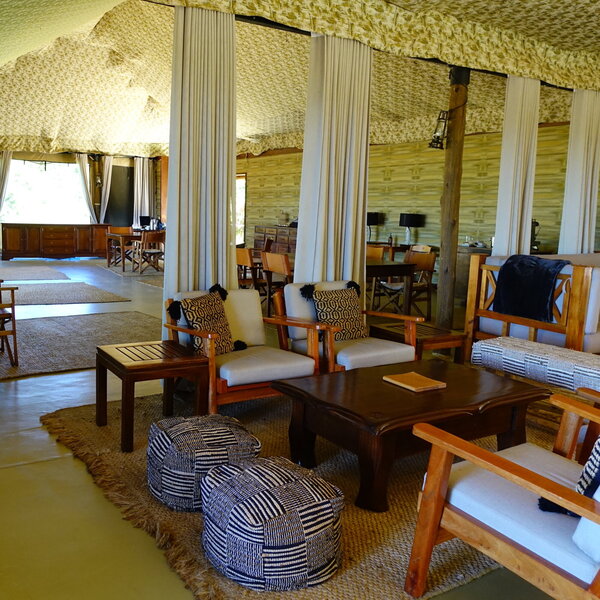
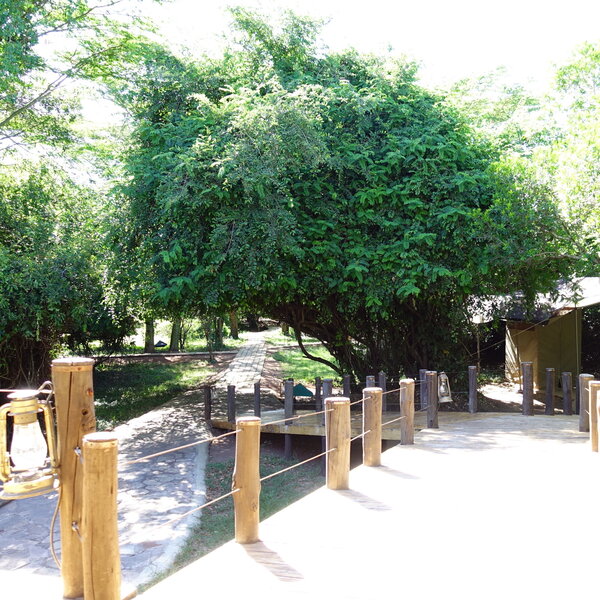
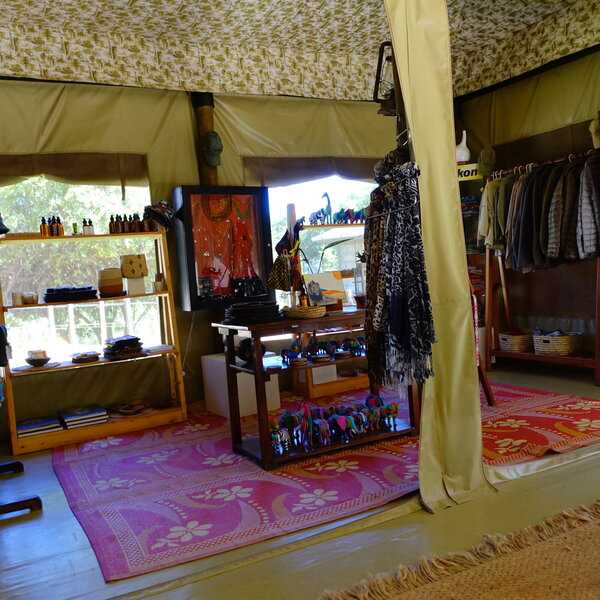
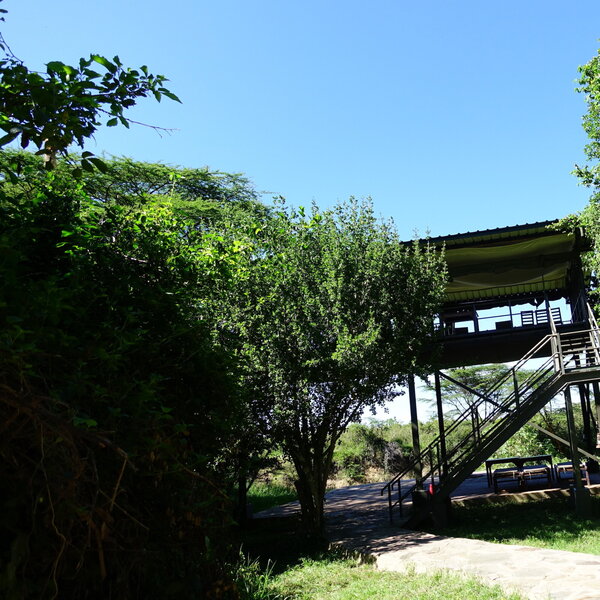
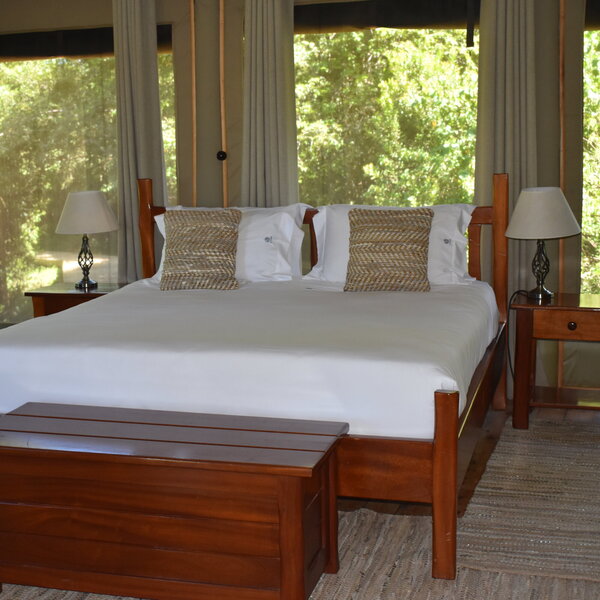
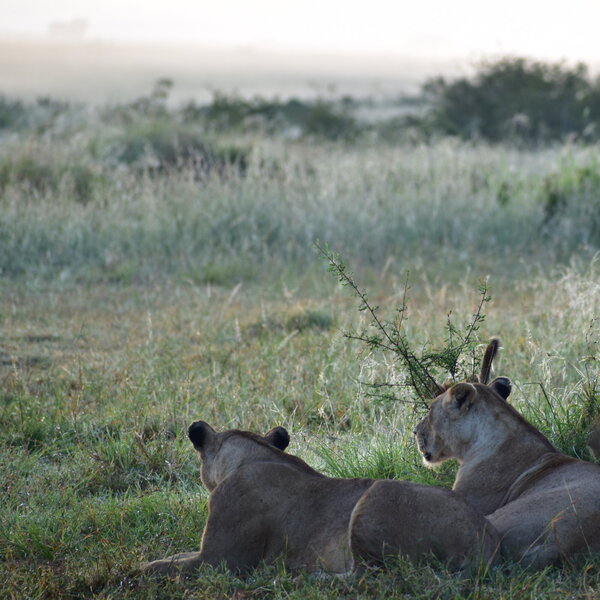
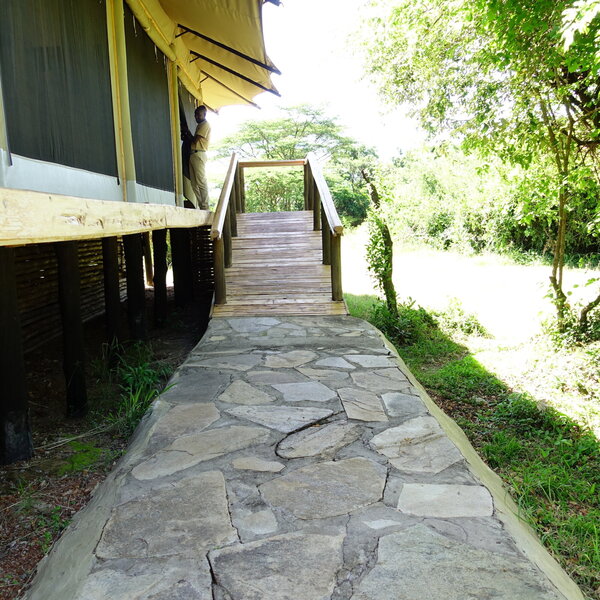
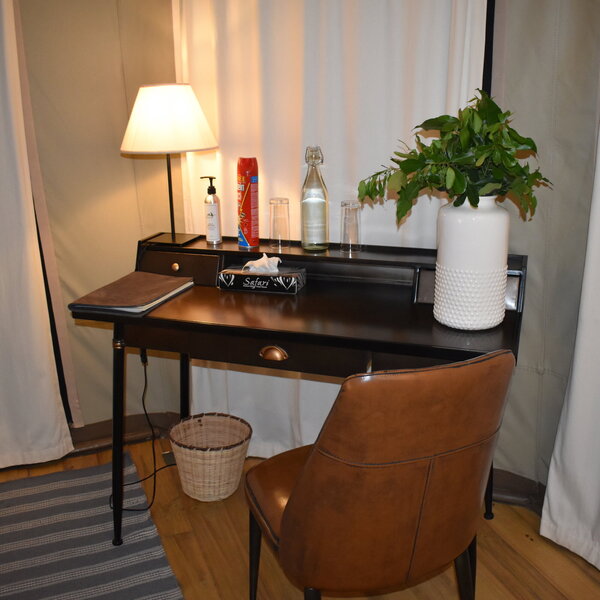
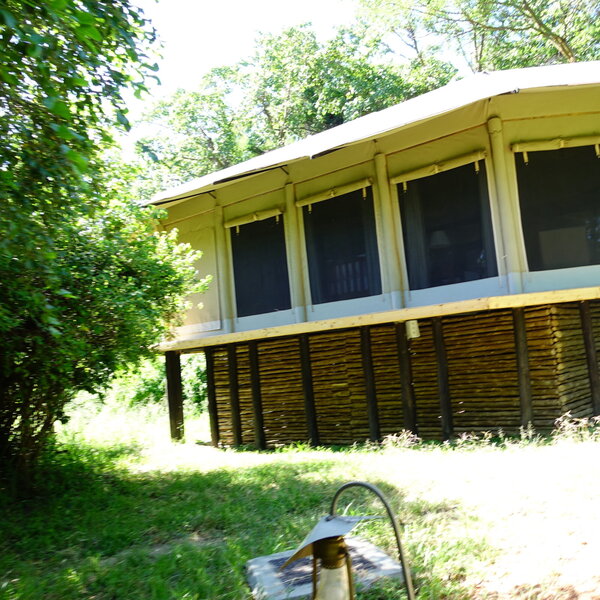
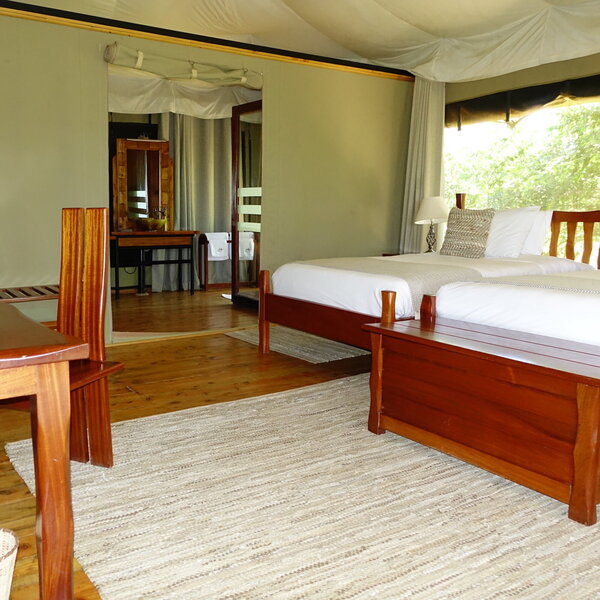
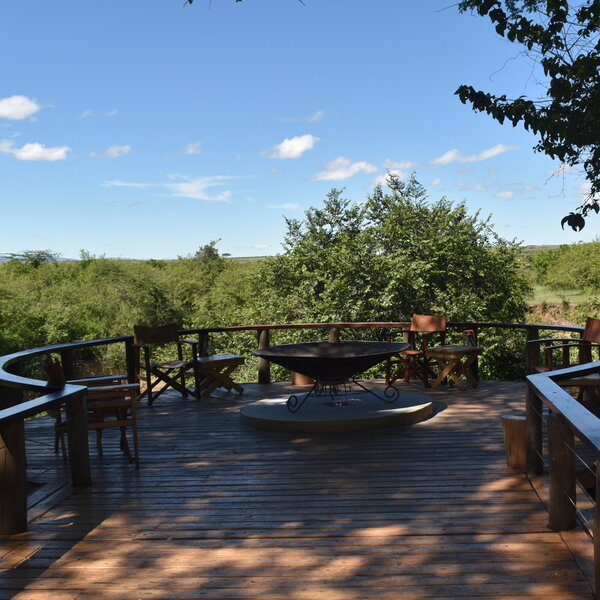
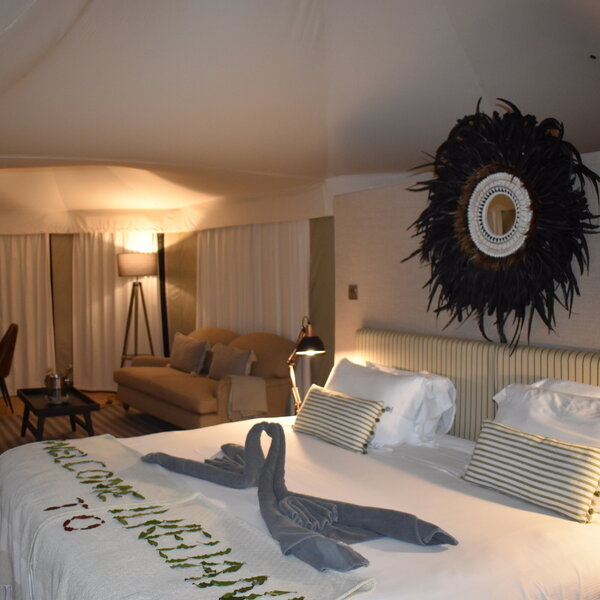
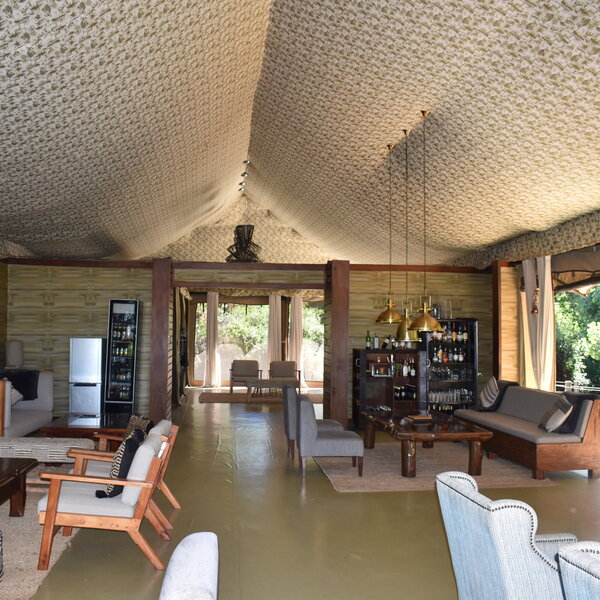
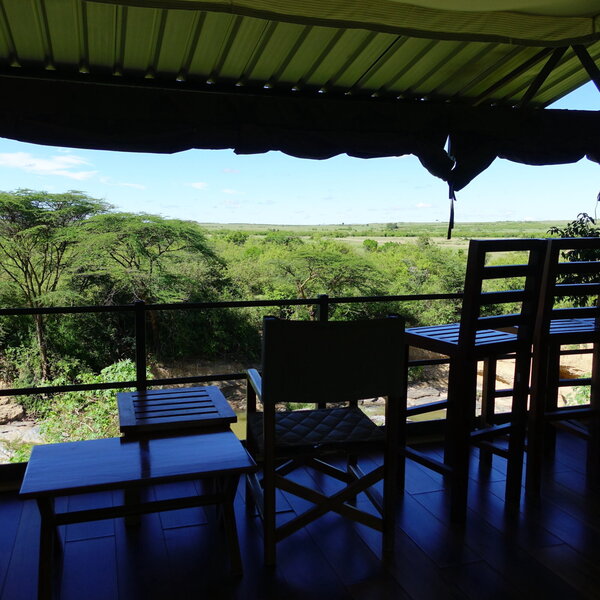
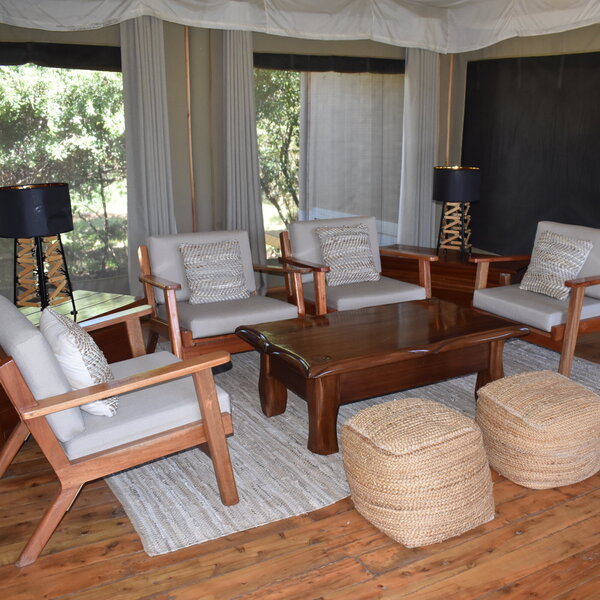
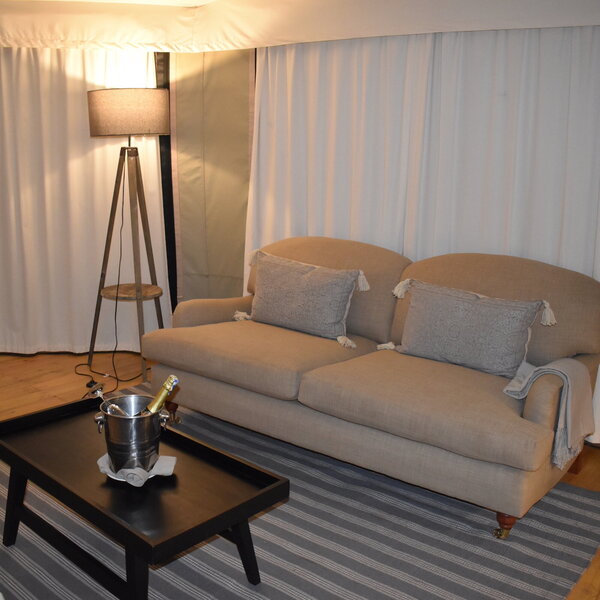
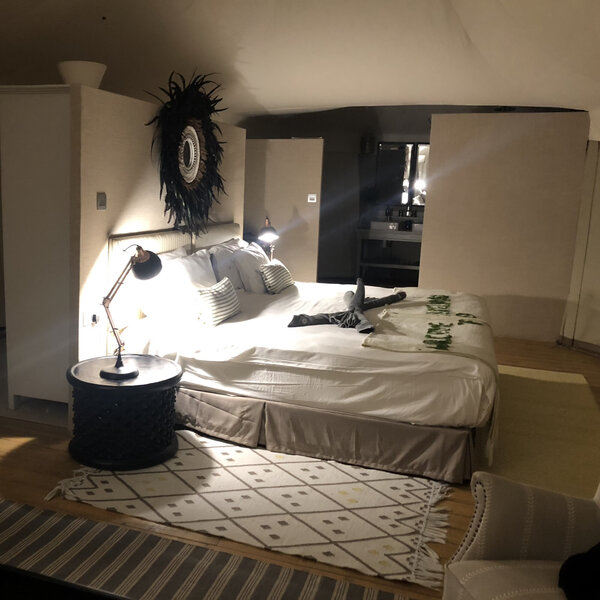
Expert Africa's gallery
When we travel we take lots of photos ourselves to give you a real and un-edited view of the safaris. See our 19 pictures of Ilkeliani Camp to get the candid view.
View galleryIlkeliani Camp: Our full report
Ilkeliani, which means Young Maasai Warrior in the Maasai people’s Maa language, is a smart, elegant camp ...
... overlooking the Talek River, just outside the Maasai Mara National Reserve.
The camp has access via a private footbridge over the Talek river directly into the Maasai Mara National Reserve. The camp's safari vehicles park on the reserve side, which puts it in a convenient location for game drives in the Sekenani sector of the reserve.
Ilkeliani has a total of 12 tented rooms in two wings; the west wing on the left of the communal area has a total of four premium tents and the east wing on the right side has eight spacious standard tents. All the rooms overlook the Talek River, although views can be restricted by abundant vegetation.
The camp's main communal area consists of a large, open-fronted dining room or mess, and lounge area. The central lounge area is spacious, with a high ceiling and has several sitting areas with cream-upholstered sofas, scattered with cushions, wooden coffee tables and jute rugs, making for a lovely relaxing atmosphere, especially in the evening before dinner time. The lounge in front leads out to an open deck where there is a fire pit with directors’ chairs dotted around looking out onto the plains. At the back leading from the lounge area there is a well-stocked curio shop offering local handicrafts and safari gear. From here the path leads to the standard tented rooms and to the elevated observation deck area, offering sweeping views of the Maasai Mara plains.
The eight spacious standard tents are raised on wooden decks. The tents are well spaced out from each other and are furnished with wooden-framed beds and storage chests, bedside tables and lamps, cosy armchairs, writing desks, and canvas, stand-alone wardrobes with digital safes and free-standing fans for use on warmer evenings. The en-suite bathroom has twin cast iron wash basins and a shower, and complimentary toiletries. The deck at the front of the tent is furnished with two director's chairs.
One of the standard tents, plus the family unit (which consists of two tents with a living area in the middle) have access ramps making them accessible for wheelchair-users.
The four premium tents are away from the main communal area and offer more spacious accommodation with a separate sitting area, a writing desk and chair and a spacious wardrobe space behind the bed.
When Expert Africa was last visiting in 2023, they were constructing a swimming pool which will be a welcome addition when completed - though bear in mind water temperatures tend to be chilly at this altitude.
Spa treatments can be arranged at extra cost, with treatments taken on the balcony of your tent.
Activities at Ilkeliani focus on game drives, usually departing twice a day, at the crack of dawn, and again in the late afternoon. All-day game drives with packed meals can also be arranged. It is also possible to organise hot air balloon flights over the Maasai Mara and cultural visits to a nearby Maasai village.
Activities
4WD Safari
Birdwatching
Cultural excursion
Hot air ballooning
Private activities
Families & children
- Attitude towards children
- Children are welcome.
- Property’s age restrictions
- Ilkeliani accepts children of all ages, however we recommend children should be over the age of 8
- Special activities & services
- Nature walks around the grounds, spear-training.
- Equipment
- There is no special equipment at the camp.
- Generally recommended for children
- Ilkeliani is a good choice for a family safari. The new swimming pool will be very welcome for older children, though please note no life guards are in attendance so children need to be supervised.
Food & drink
- Usual board basis
- Full Board & Activities
- Food quality
- During our last visit, we enjoyed an excellent dinner, preceded by pre-dinner snacks from a choice of vegetarian and non-vegetarian options. We had chicken nuggets with a sweet chilli dip and bruschetta. The dinner menu started with a choice of French onion soup or antipasti. This was followed by a choice of two non-vegetarian options (grilled lamb steak or pan-seared tuna steak) and two vegetarian options ugali (maize meal) with spinach, or vegetable noodles with Swahili kachumbari relish. We opted for the noodles. For dessert we still had room for mango crumble with custard, but we could have chosen grilled pineapple with ginger and honey.
Breakfast is either eaten in camp or taken as a packed breakfast while on your morning game drive - including fruit, yoghurt, pastries, and boiled eggs. Breakfast in camp always includes cereals and eggs to order.
For lunch there is a daily set menu with similar choice to dinner with more emphasis on salads.
Dietary requests and allergies are easily catered for with advance notice from Expert Africa at the time of your booking. - Dining style
- Individual Tables
- Dining locations
- Indoor and Outdoor Dining
- Further dining info, including room service
- Room service can be arranged on request
- Drinks included
- Soft drinks, house beers, wines and selected spirits are included. Additional charges apply for premium spirits and wines.
Our travellers’ wildlife sightings from Ilkeliani Camp
Since mid-2018, many of our travellers who stayed at Ilkeliani Camp have kindly recorded their wildlife sightings and shared them with us. The results are below. Click an animal to see more, and here to see more on our methodology.

100% success

100% success

100% success

100% success

100% success

100% success

100% success

100% success

100% success

100% success

50% success

50% success

0% success

0% success

0% success

0% success
Getting there
- Location
- Maasai Mara National Reserve, Kenya
- Ideal length of stay
- Spend three nights or more to ensure a good experience of the Maasai Mara eco-system
- Directions
- It is a 60-minute flight from Nairobi to Ol Kiombo airstrip in the Mara. From there, it is approximately a 30-minute drive to Ilkeliani Camp.
- Accessible by
- Fly-and-Transfer
Communications
- Power supply notes
- 24-hour power, mainly by solar with a back-up generator if required.
- Communications
- Wi-Fi is available in the main areas only.
- TV & radio
- No TV
- Water supply
- Borehole
- Water supply notes
- Filtered water is provided for drinking in the tents.
Health & safety
- Medical care
- Staff have basic first aid training. There is a doctor based at Talek village nearby and the camp has access to the AMREF flying doctors service in case of emergency.
- Dangerous animals
- High Risk
- Security measures
- The camp is unfenced, and askaris patrol the property day and night. After dark, guests are escorted to and from their tents.
- Fire safety
- Every tent has a fire extinguisher and staff have fire training.
Useful info
- Disabled access
- On Request
- Laundry facilities
- Laundry can be done at extra cost. Washing powder is provided in the rooms for washing underwear.
- Money
- Safes are provided in the tents.
- Accepted payment on location
- Extras can be paid for in cash (US dollars, Euros, Pounds Sterling and Kenya shillings) or using major credit cards, with a nominal surcharge.
Plan and book your trip with Expert Africa
All of our trips are tailor-made, so we'll always adapt them to suit you. Talk to an Expert and let us plan and arrange your perfect trip.

Talk to an Expert
Call or email us now! We’ll match you with the Specialist in our team who is best suited to help you. Then together we can start planning your trip.

Set up your itinerary
Based on our experience and your ideas, your specialist will create a detailed, costed itinerary. We’ll refine it together, until we have a trip that you’re perfectly happy with.

Prepare for your trip
The same Specialist will make the seamless arrangements for your trip, send you detailed travel documents, and be available to answer any questions before you depart.

Travel with peace of mind
After you set off, you’ll be cared for by our partners in Africa, most of whom have worked with Expert Africa for decades. And if you ever need us urgently, we’re available 24/7.

When you return
We love to learn about your trip, and so will always be grateful if you’ve the time to give feedback to your Specialist when you return.
Ilkeliani Camp's location
Look closer at the environment and surroundings of Ilkeliani Camp.
Other lodges in Maasai Mara National Reserve
Alternative places to stay in this same area.
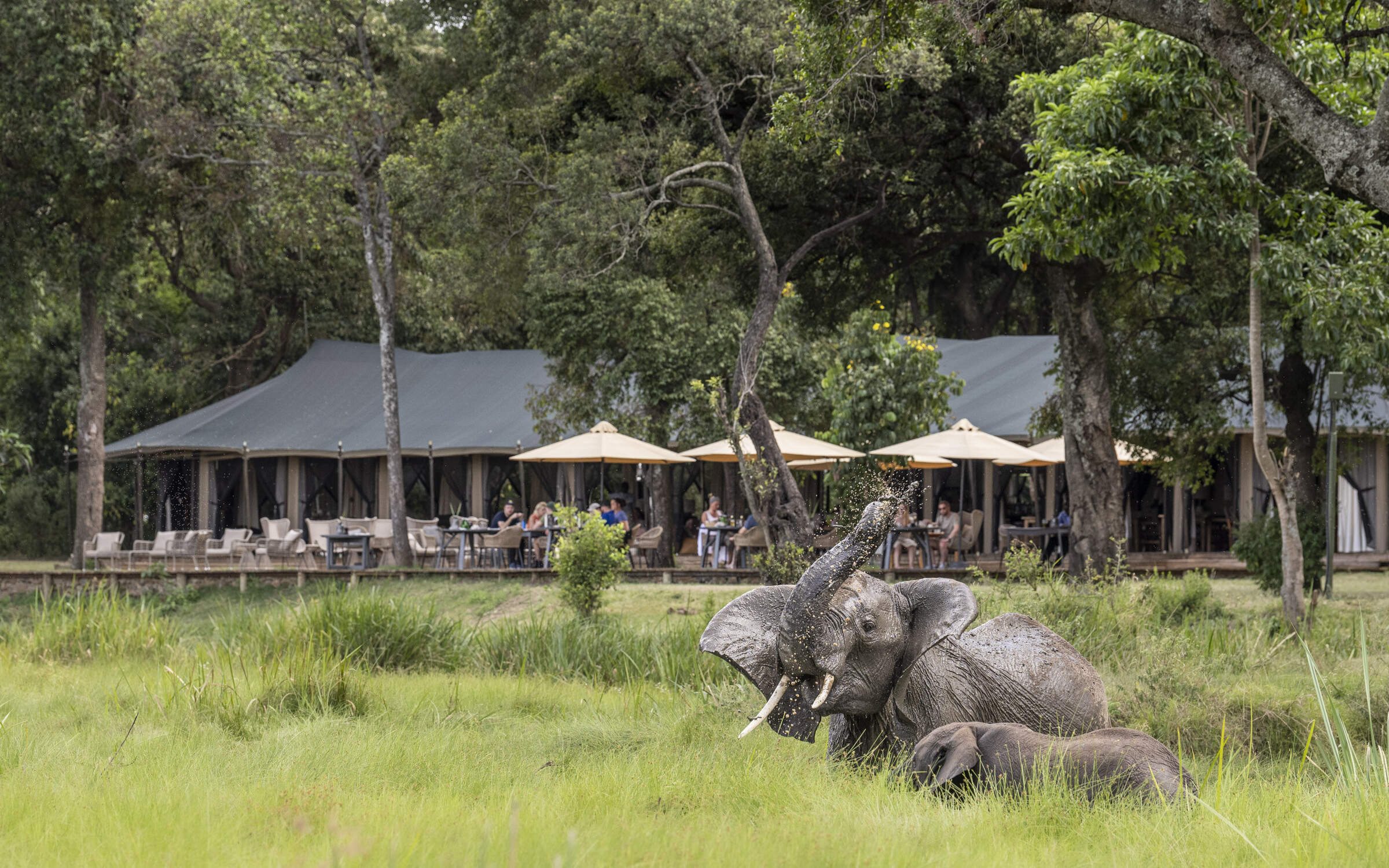
Little Governors'
Little Governors’ Camp sits by a swamp (an old oxbow of the Mara River) in the Mara Triangle sector of the Maasai Mara National Reserve. It has its own balloon-launching site.
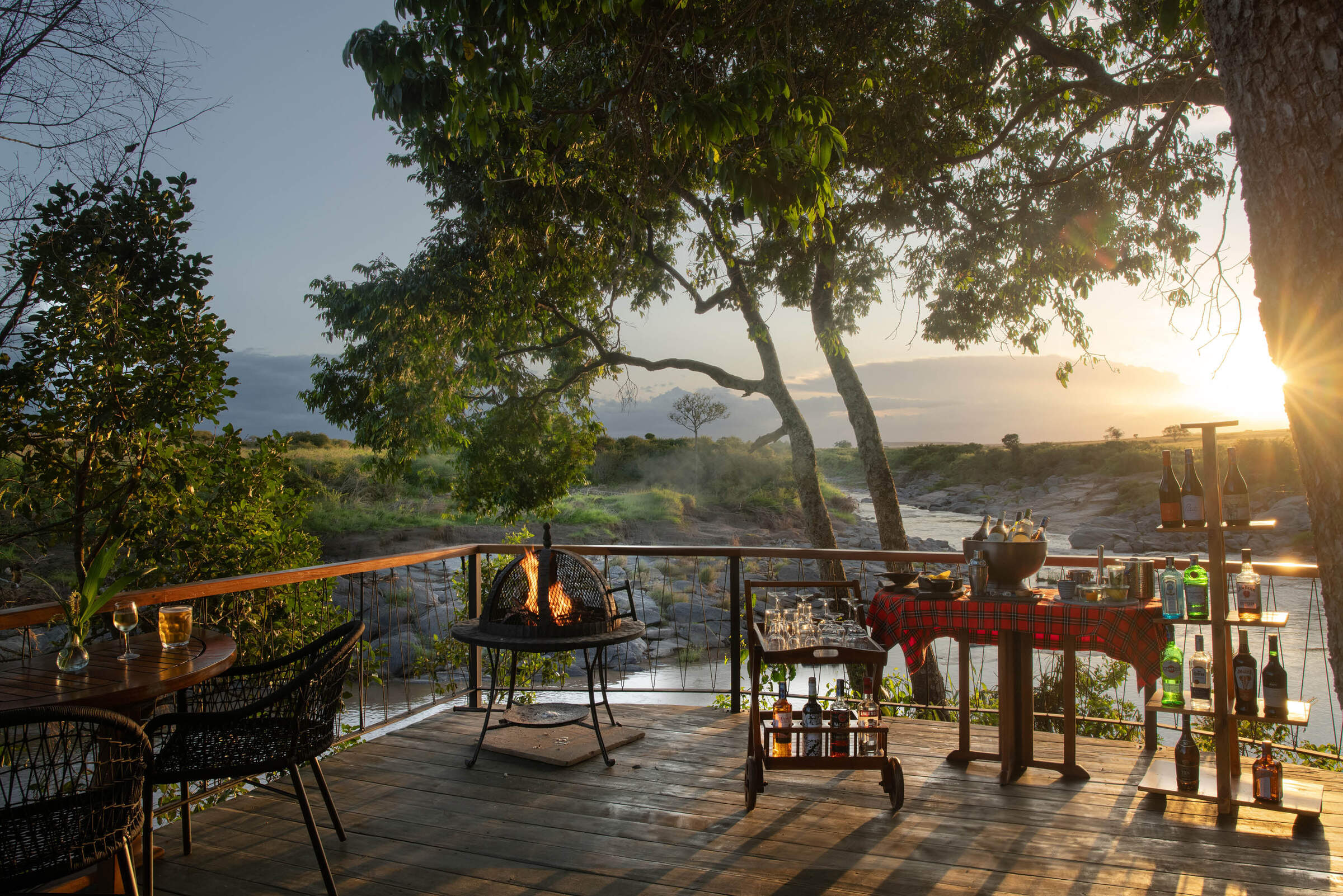
Rekero
Rekero is an unpretentious, high-end safari camp, for travellers who take their wildlife watching seriously and are prepared to pay for an exceptional location.
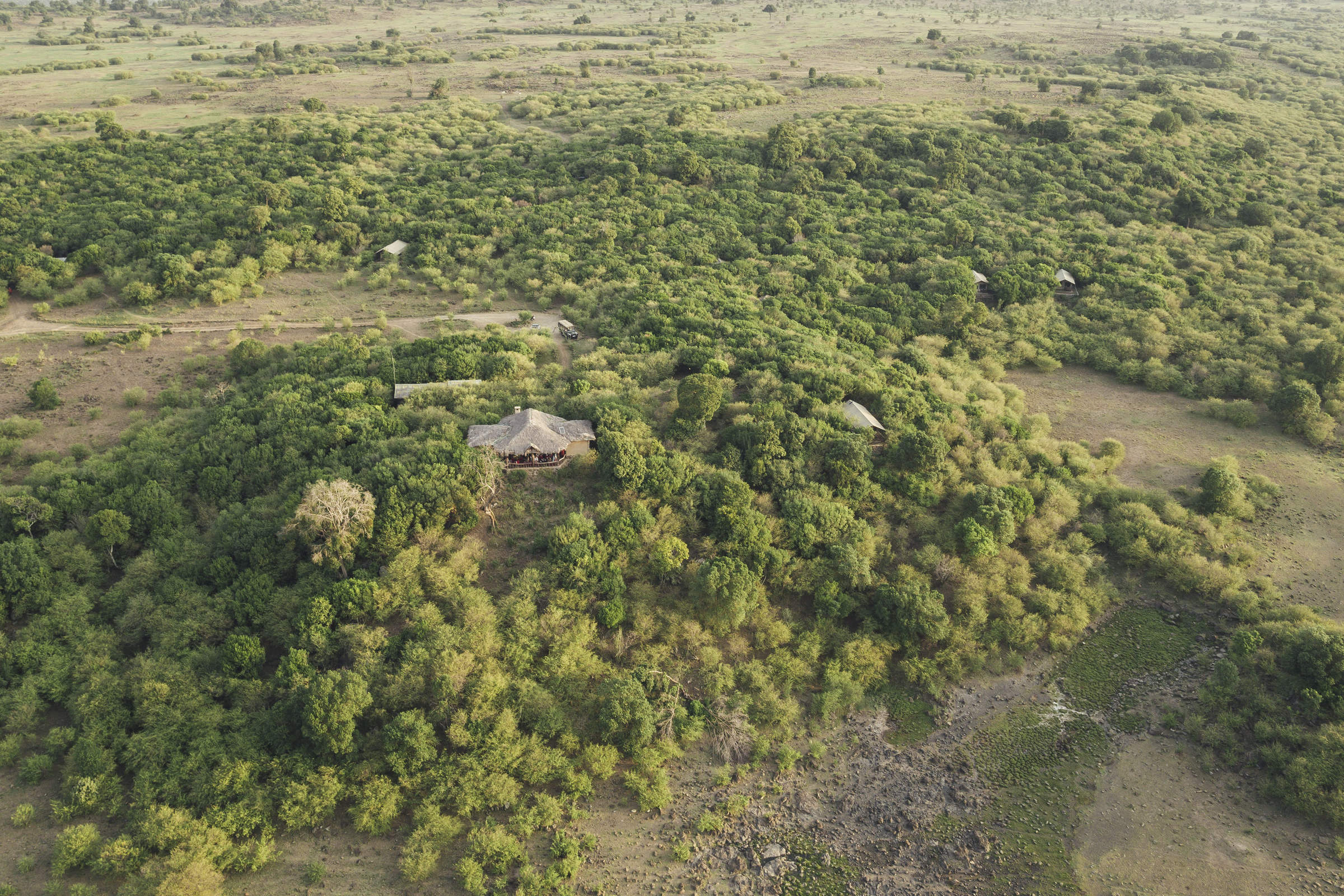
Tangulia Mara
Tangulia Mara is a rustic and traditional safari camp on the border of the Maasai Mara National Reserve owned by Jackson Looseyia of Big Cat Diary fame.
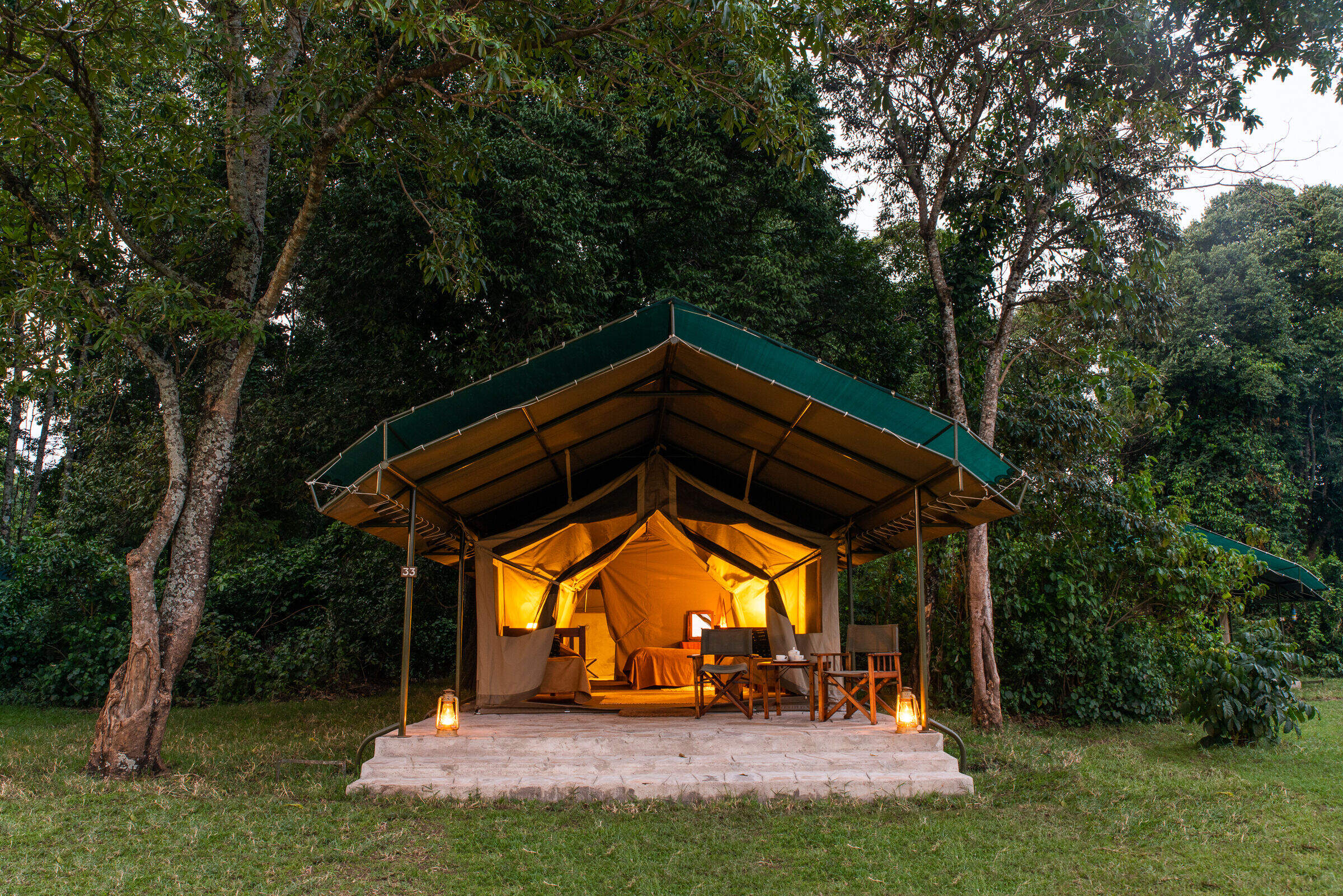
Governors' Camp
Governors' Camp is a large tented camp on the Mara River and one of the oldest in the Mara region, dating from 1972. Although unfenced, and regularly visited by elephants, the whole compound is always busy with human activity.
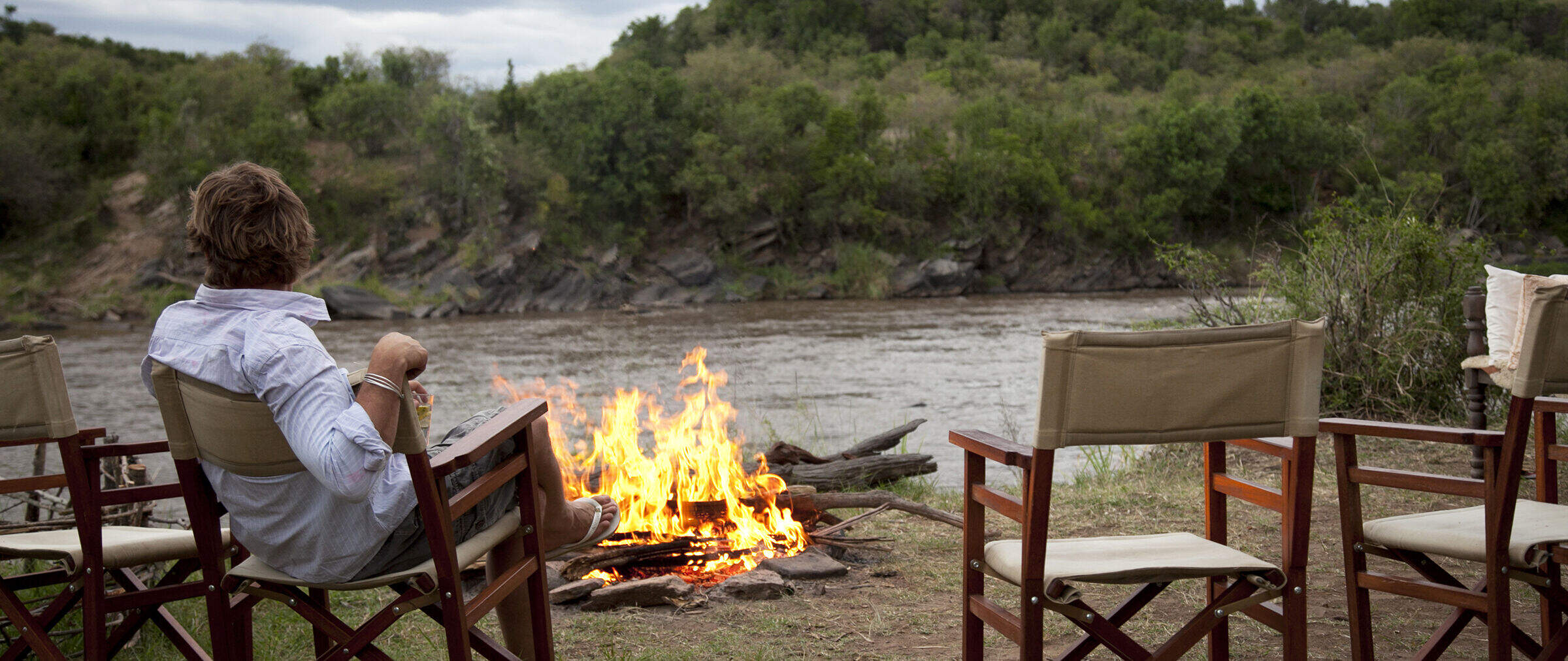
Serian Nkorombo
Serian Nkorombo is a luxury bush camp in the Musiara sector of the Maasai Mara National Reserve on the east side of the Mara River.
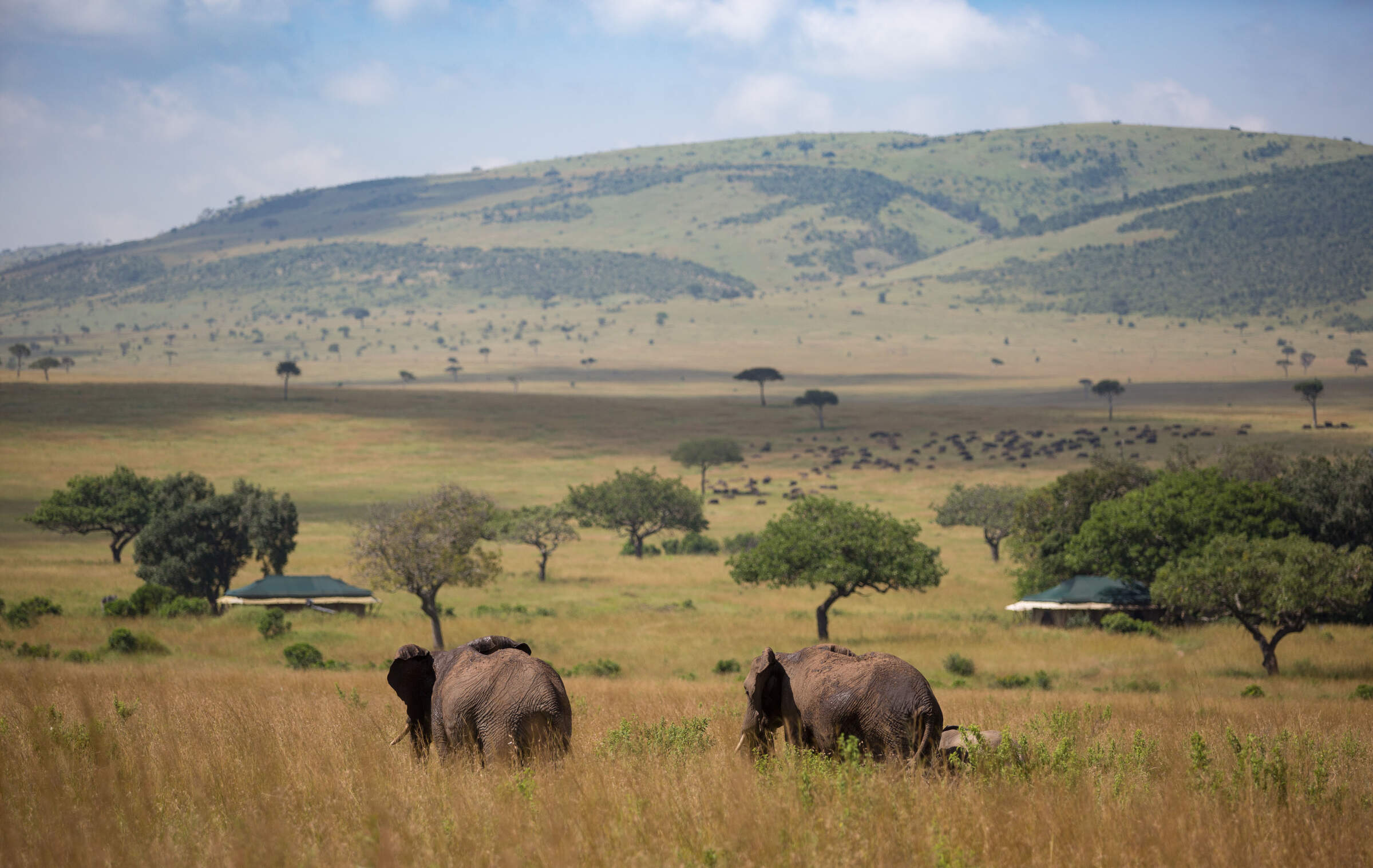
Sand River Camp
Luxury colonial-style tented camp on the banks of the Sand River close to the Tanzania border – a great spot to see the wildebeest migration.
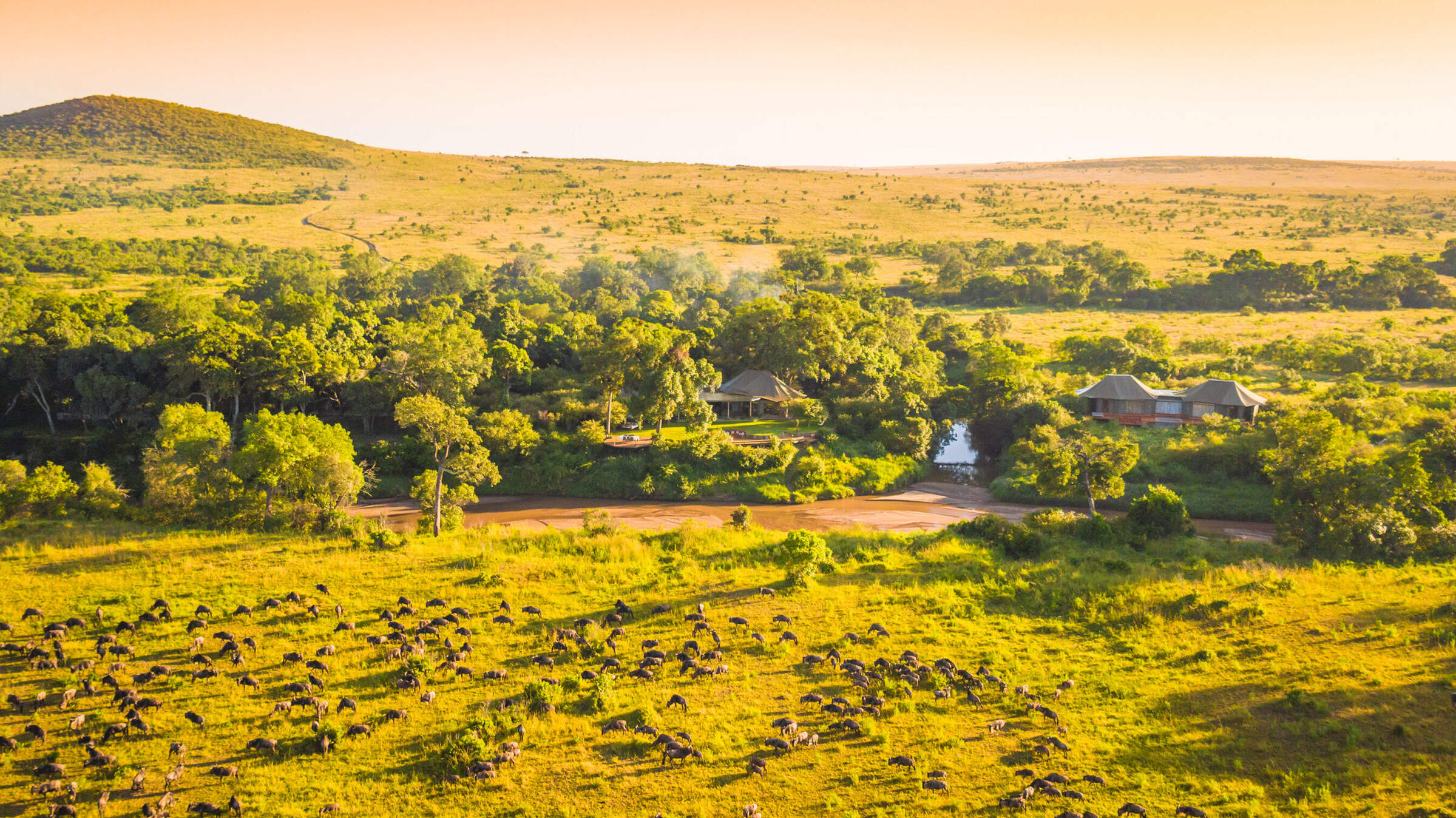
Sala's Camp
Sala’s Camp is a comfortable and intimate tented camp, with seven tented rooms, located on the banks of the Sand River, in the far south of the Maasai Mara National Reserve.
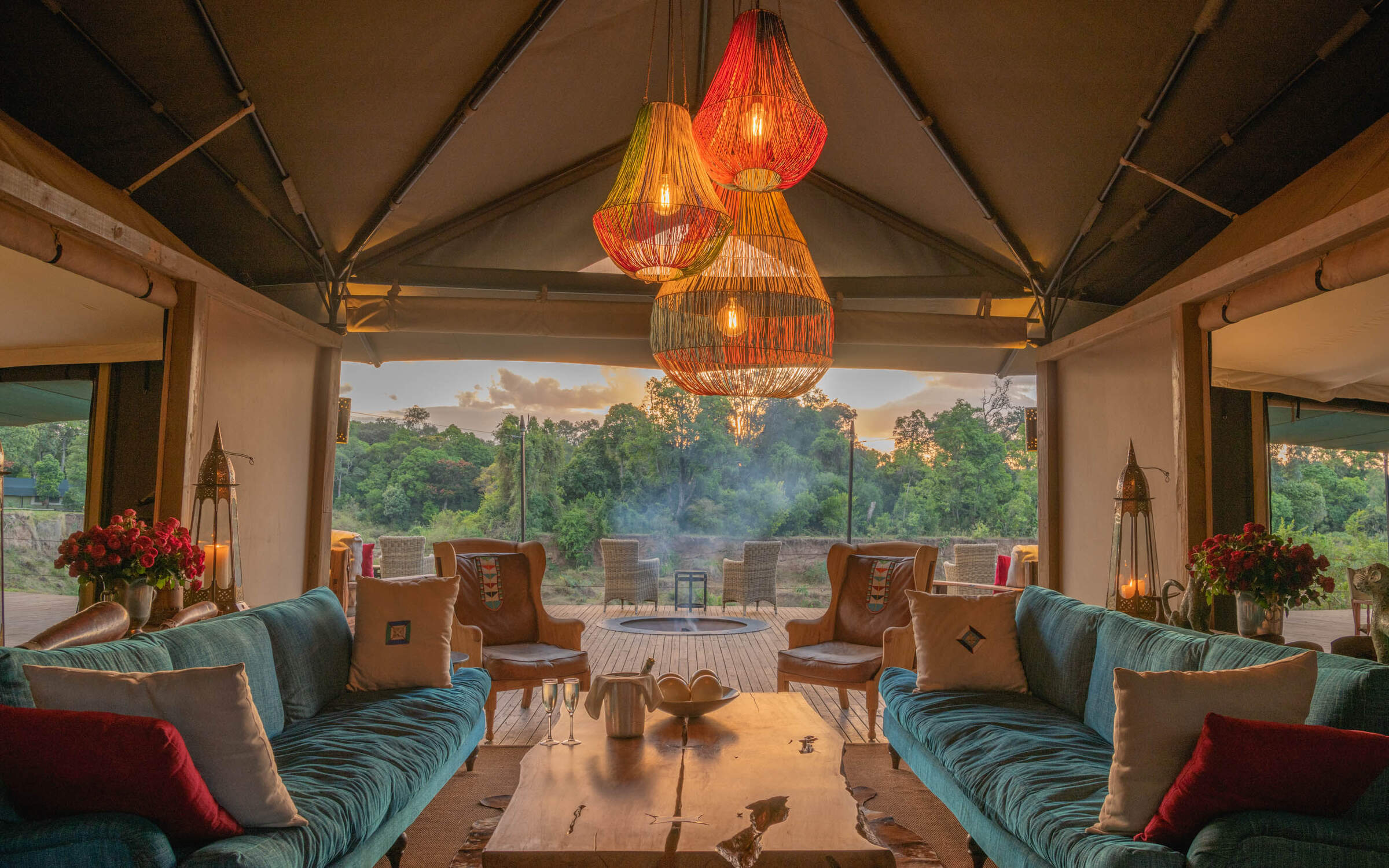
Governors' Il Moran
The smallest and most expensive of the three camps in the Governors’ group, Governors’ Il Moran Camp hugs a meander of the Mara River just 1km north of the main Governors’ Camp.
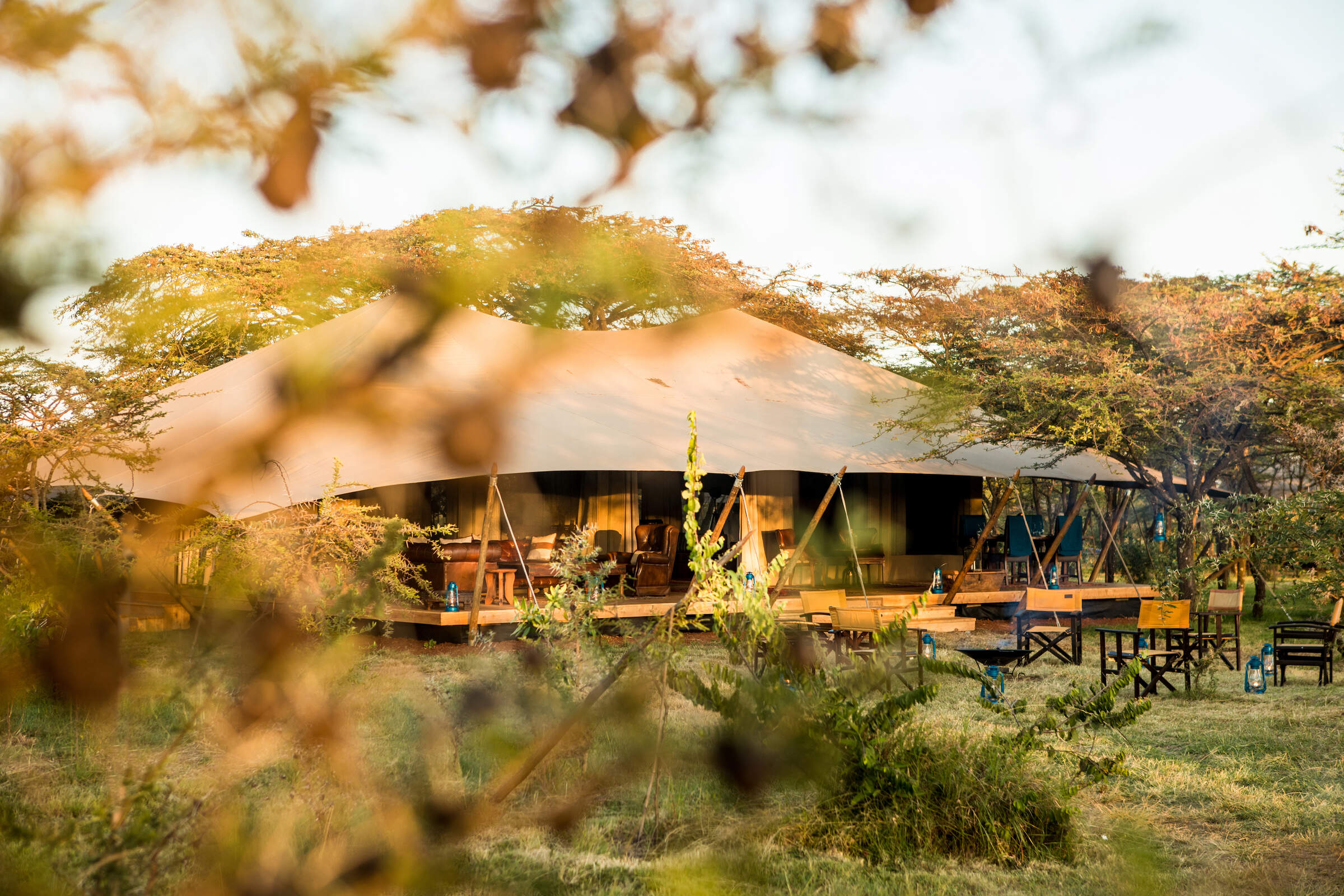
Mara Expedition Camp
Mara Expedition Camp is a small luxury camp located in a slightly elevated area of bush and woodland, just outside the Maasai Mara National Reserve.
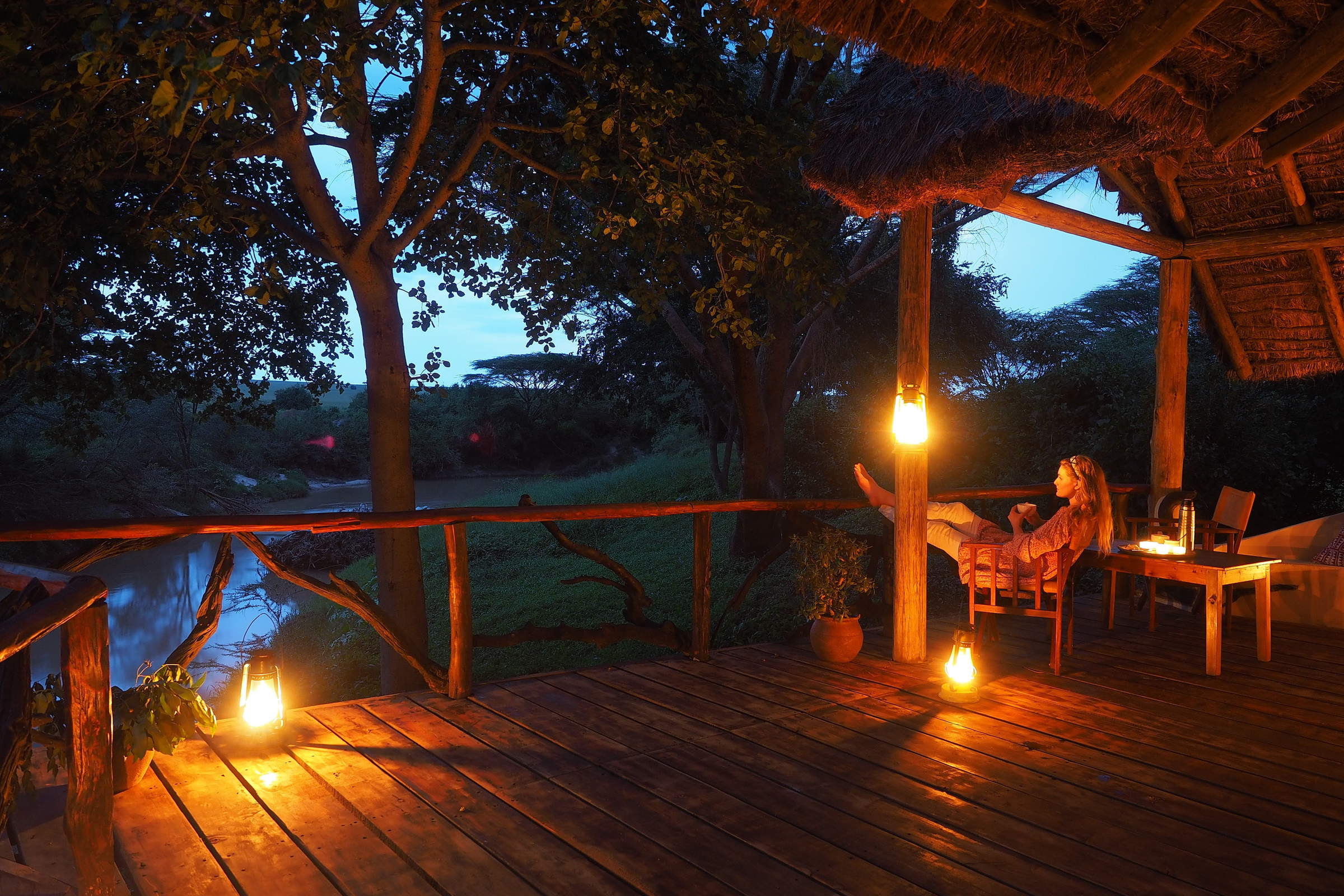
Basecamp Maasai Mara
Basecamp Maasai Mara is a family-friendly, award-winning eco-camp on a U-bend on the north bank of the Talek River, on the boundary of the Maasai Mara National Reserve.
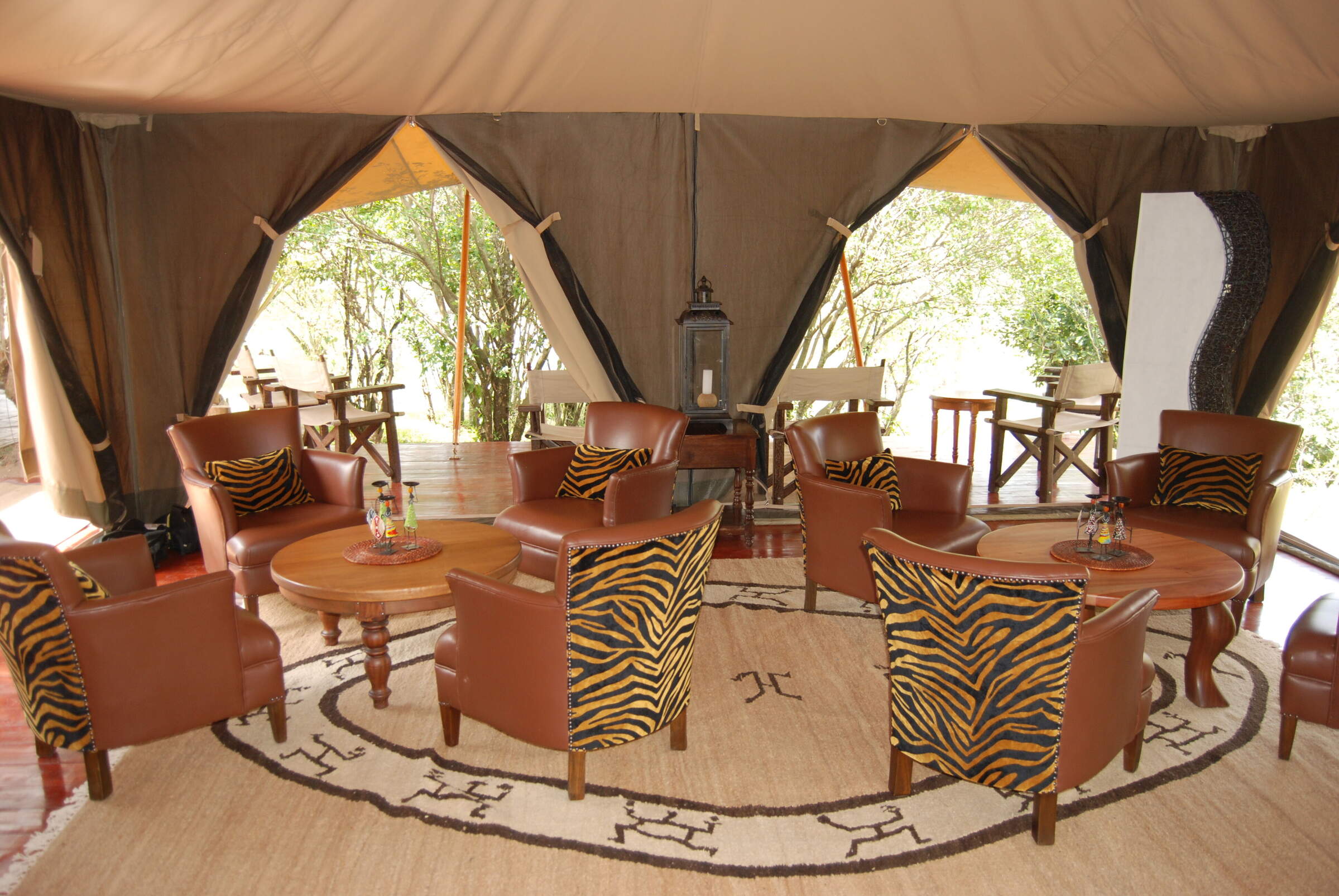
Ngenche Safari Camp
Mara Ngenche is a non-hosted, luxury tented camp with an antique style, which is perfect if you're looking for private dining while staying somewhere small and personal.
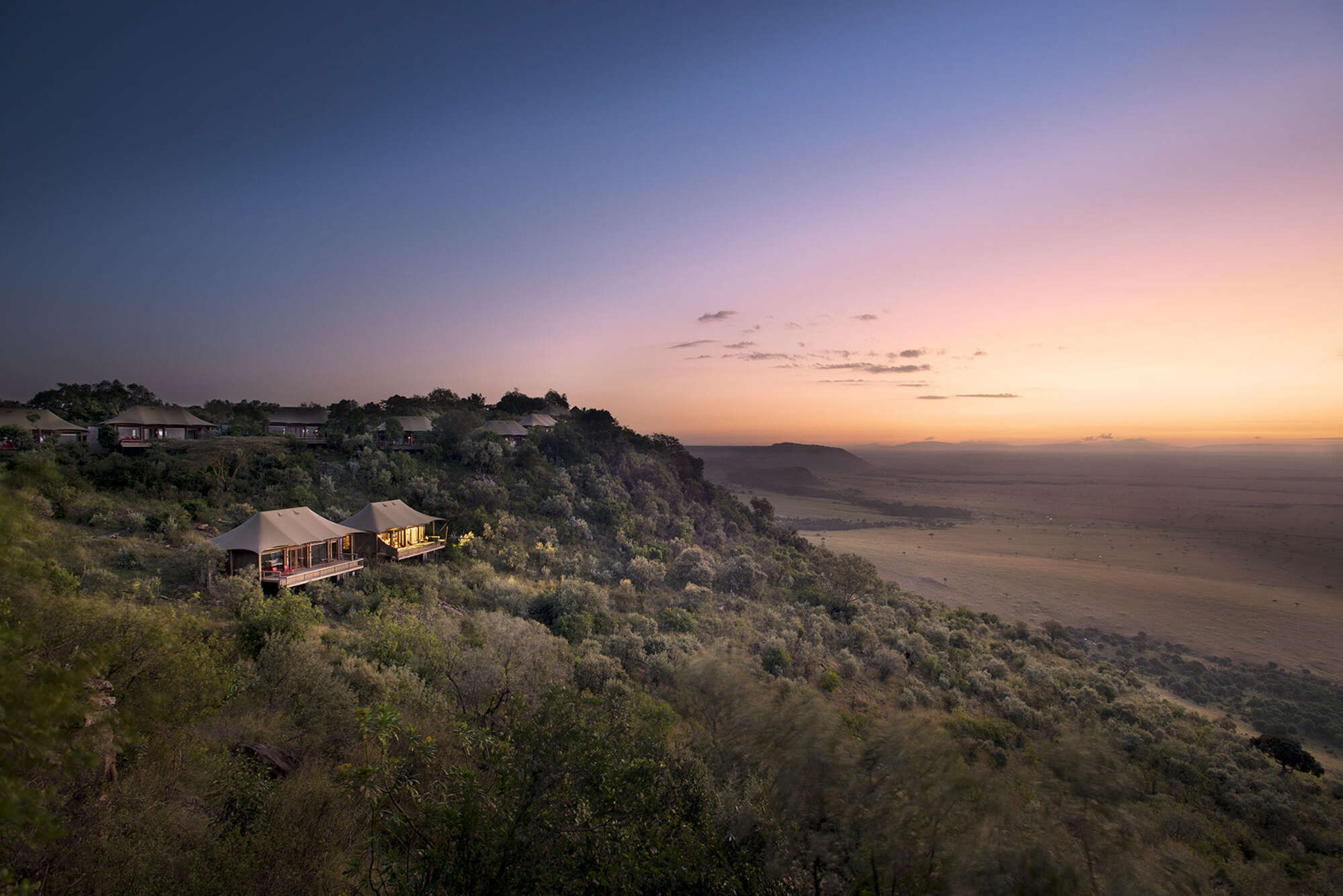
Angama Mara
Angama Mara is a top-end luxury tented camp on the Siria-Oloololo escarpment of the Maasai Mara ecoystem, just above the Mara Triangle sector of the Maasai Mara National Reserve.
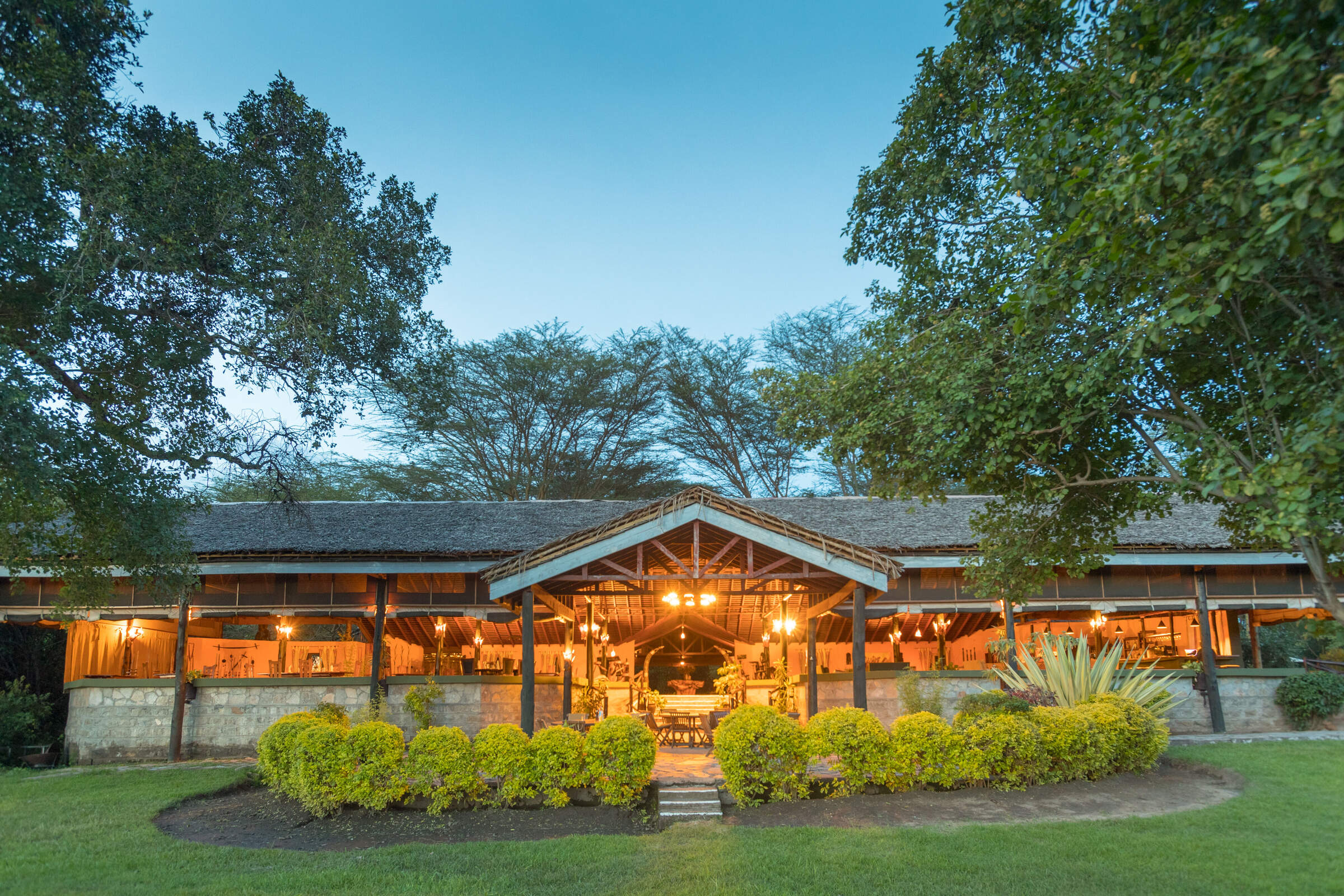
Tipilikwani Camp
Tipilikwani Mara Camp is a larger, mid-range tented camp offering good value from its base on the Talek River just outside the Mara National Reserve.

Naibor Camp
Naibor has a great location in the Mara reserve, and offers accommodation to suit different budgets, with stylish high-end tents and some simpler ones too.
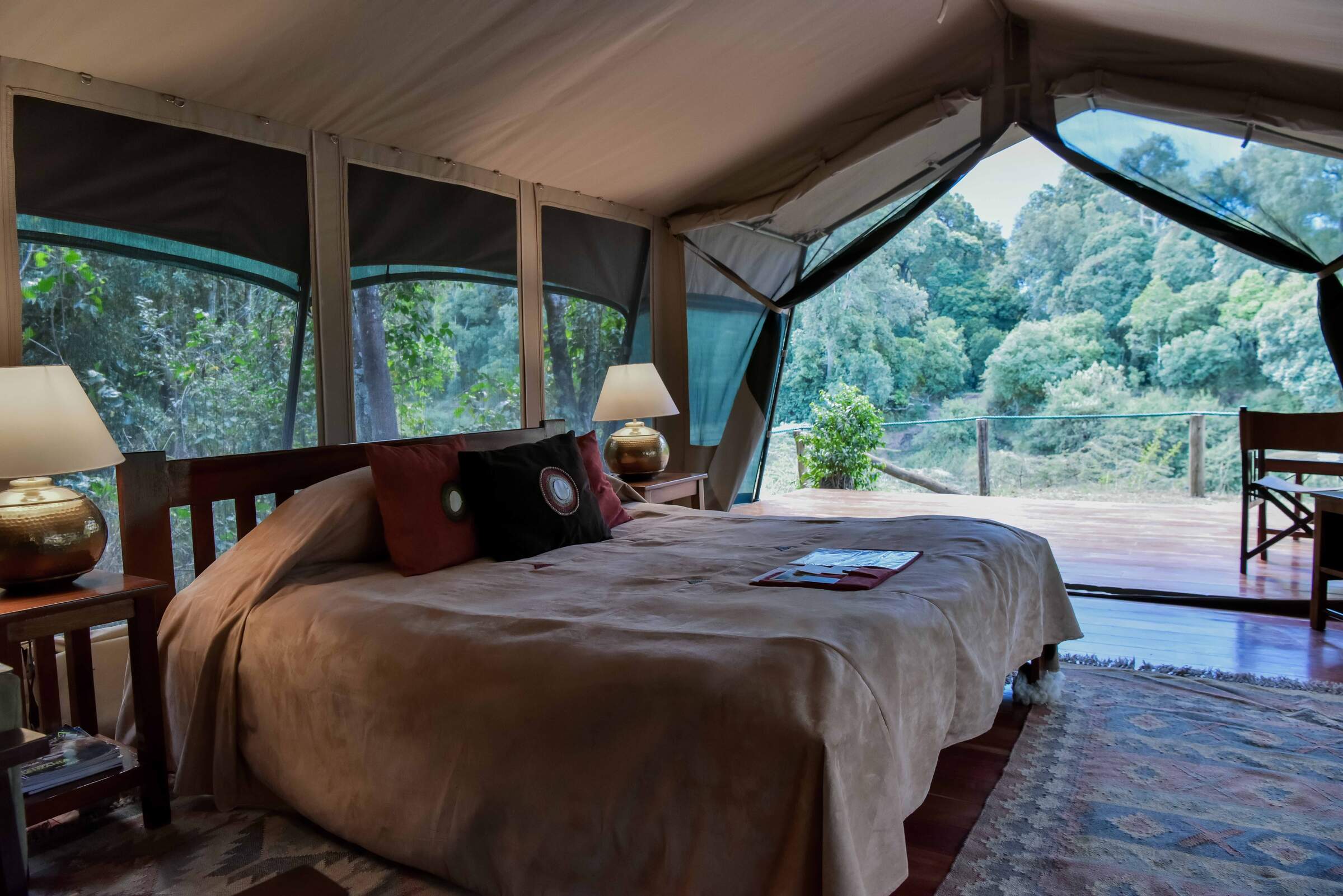
Governors' Private Camp
Located on a secluded bend of the Mara River, Governor’s Private Camp has just eight tents and is booked on an exclusive basis.
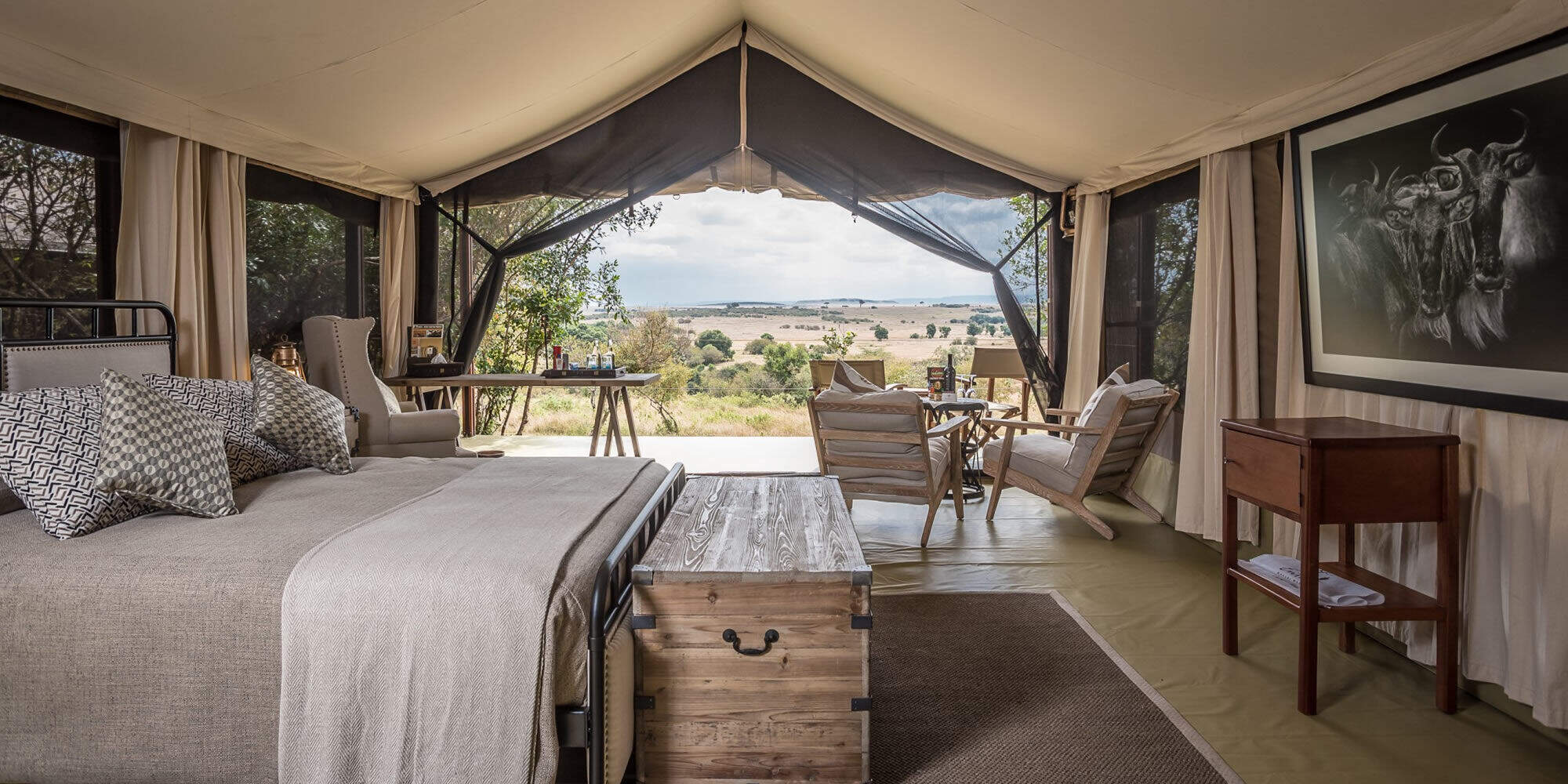
Entim Camp
Entim Camp is well located in the heart of the Mara National Reserve, offering traditionally styled tented accommodation.
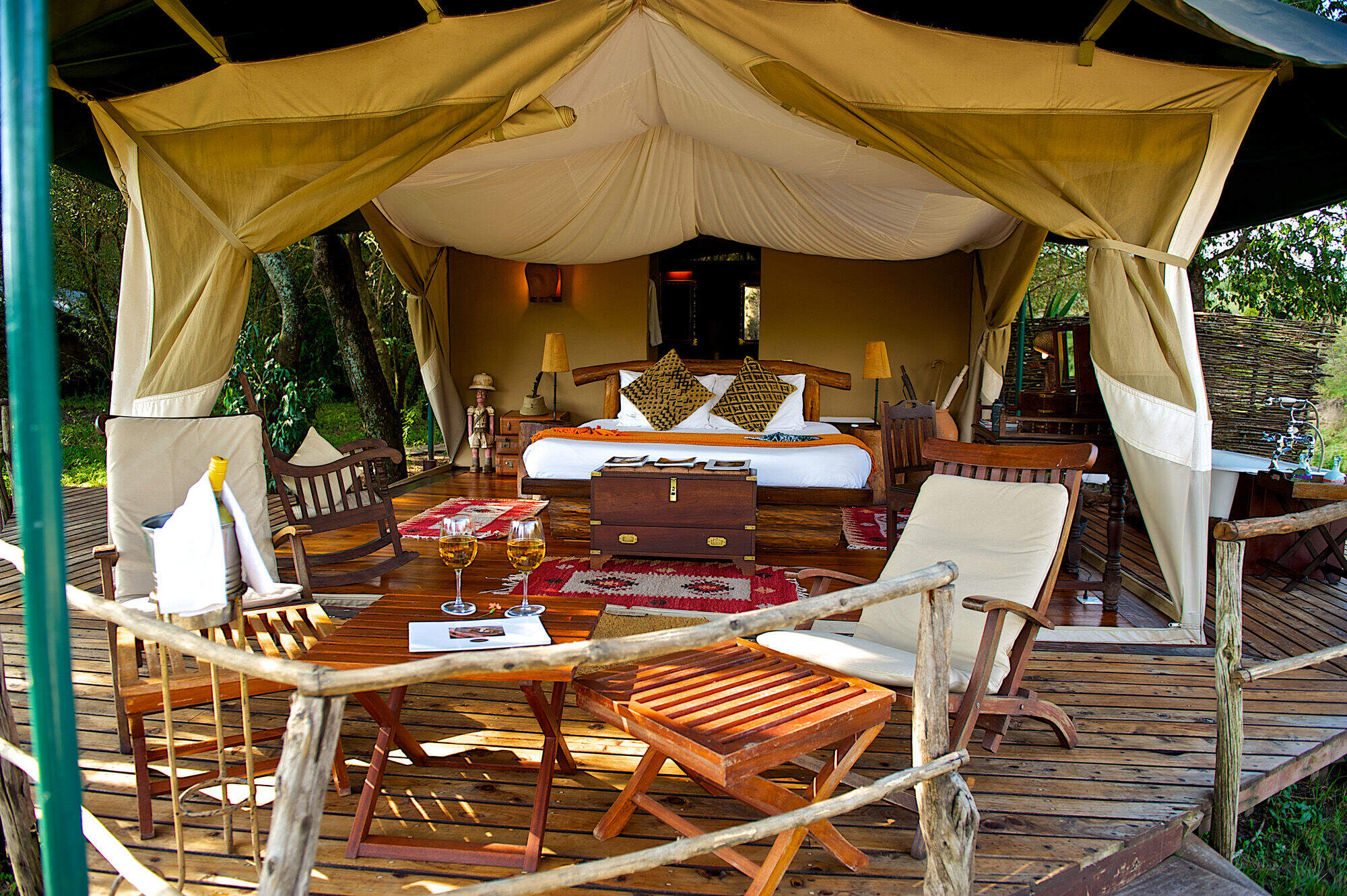
Mara Explorer Camp
Mara Explorer is a smart tented camp is in a scenic location on a bend in the Talek River.
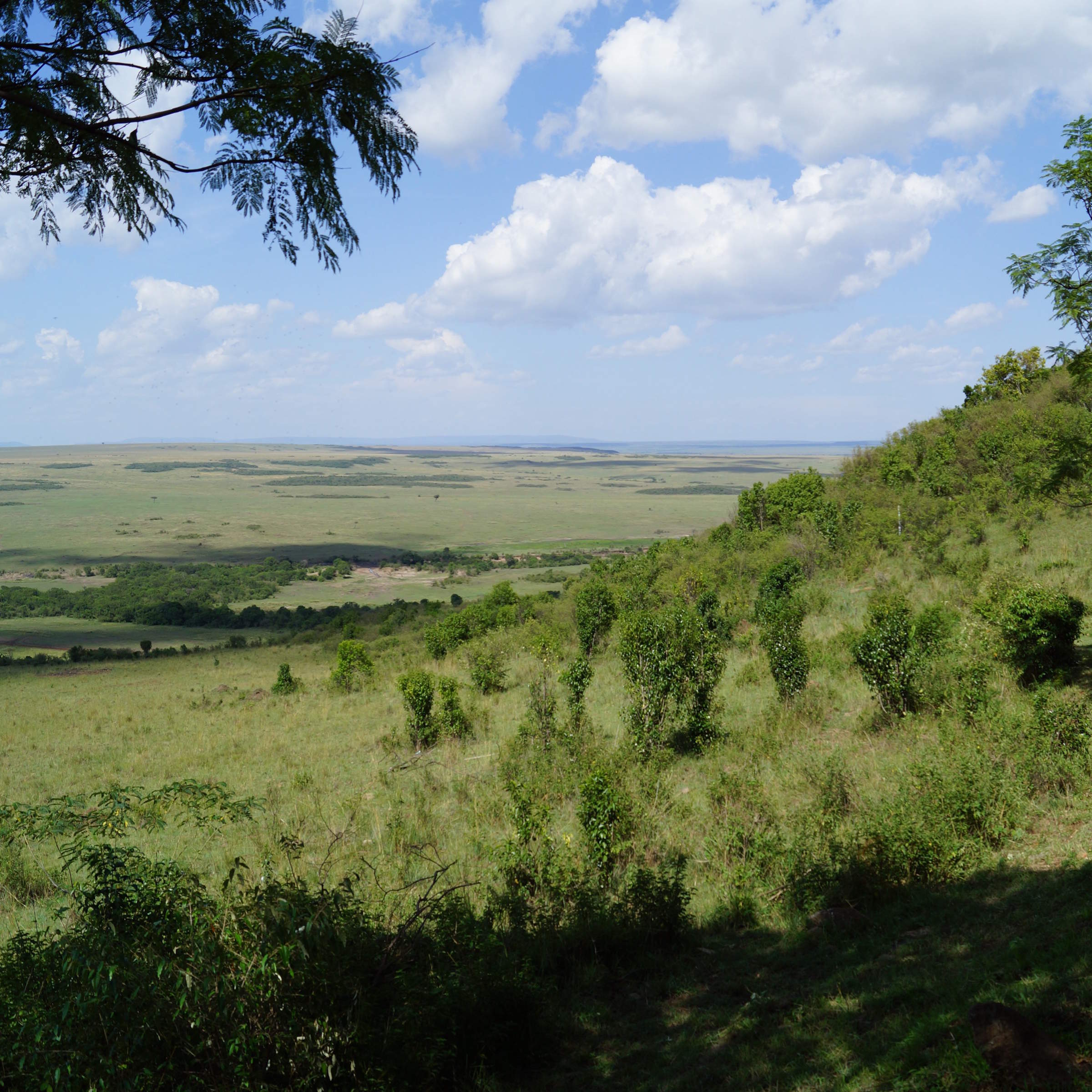
Mara Serena Safari Lodge
Mara Serena Safari Lodge is a large safari hotel with views of the Mara River, in the Mara Triangle sector of the Maasai Mara National Reserve.
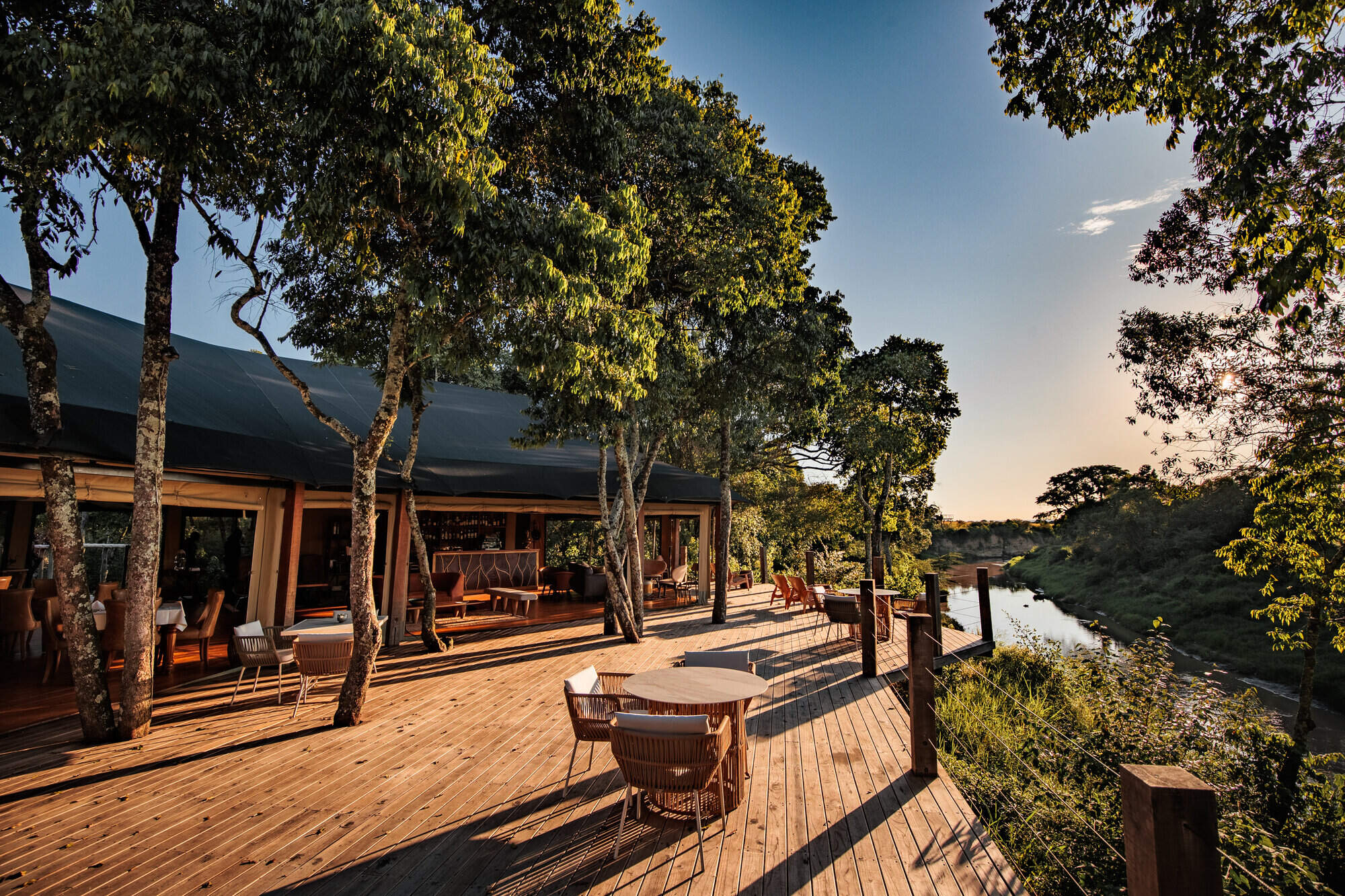
Ishara
Ishara is a highly luxurious safari camp in the Maasai Mara, located on the Talek River, which is one of the best areas in Kenya for wildlife.
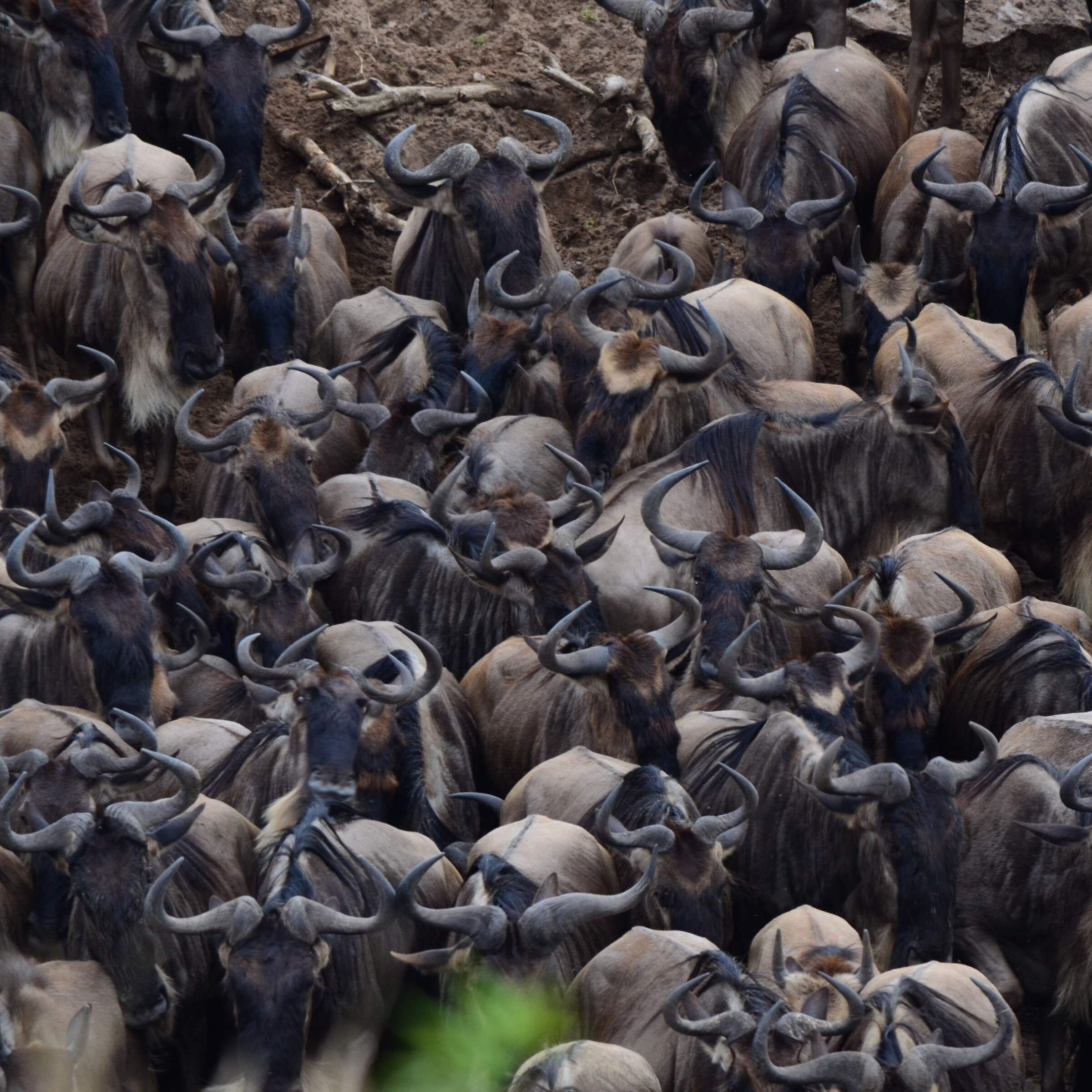
When to go to Maasai Mara National Reserve
Our month by month guide: What it's like to visit Ilkeliani Camp in Maasai Mara National Reserve
Jan
Feb
Mar
Apr
May
Jun
Jul
Aug
Sep
Oct
Nov
Dec
Kenya in January
Clear, hot days and warm nights make this high season a popular time for safaris and it’s also good for diving and snorkelling as water clarity is excellent and gets better as the dry season progresses. Most lodges and tented camps treat January after the New Year week is over, as mid-season, making it a good compromise in terms of value for money with reasonably reliable, dry weather and some greenery left in the landscape.
Expert Africa bases its description of climate and weather in January, like the other months of the year, on the climate records of roughly the last 100 years, and it's fair to say that the weather and seasons since the beginning of this century have been highly irregular and unpredictable.
- On average, January is the second driest month of the year
- Elephants dig waterholes in the dry riverbed in the Samburu reserve.
- Wildebeest and many antelope have their calving season, to February.
- Migrant birds are seen in huge numbers, especially in the Rift Valley.
- Sea water clarity around the coral reefs generally good.
Our view
Fantastic: the very best time to visit
Weather in January
Kenya in February
With the short dry season well established, the grass grazed down and wildlife gathering close to water points, this is still a good time for a safari. Good water clarity in the Indian Ocean's coastal waters makes for excellent diving and snorkelling conditions.
Expert Africa bases its description of climate and weather in February, like the other months of the year, on the climate records of roughly the last 100 years, and it's fair to say that the weather and seasons since the beginning of this century have been highly irregular and unpredictable.
- On average, February is the driest month of the year.
- It’s sometimes possible to swim with whale sharks at Diani Beach.
- Migrant birds are still seen everywhere, especially near water.
- This is usually peak calving season for wildebeest and many antelopes.
- This month is often the hottest of the year, especially on the coast.
Our view
A very good time to visit
Weather in February
Kenya in March
Hot, increasingly humid weather – with good diving and snorkelling conditions at the start of the month – gives way to rains and lower accommodation costs. Expert Africa bases its description of climate and weather in March, like the other months of the year, on the climate records of roughly the last 100 years, and predicting the seasons since the beginning of this century has been difficult.
March is the month when – traditionally – intensely hot conditions build up until a cloudburst finally happens at the end of the month or in early April, to relieve the humidity. As ever, regional variations across the country can greatly impact on visitors' experiences.
- Sea-water clarity is best for diving before the long rains start.
- Visitor numbers are low, though the Easter holidays can be busier.
- Night skies can be scintillatingly clear in early March.
- Cropped down savannah grasses can make it easier to see the wildlife.
- Temperartures climb high, especially at lower elevations.
Our view
A good time to visit, with pros & cons
Weather in March
Kenya in April
April sees the full onset of the southeast monsoon wind or kusi, which heralds the long rains. Temperatures drop soon after the rains are established and you’ll often have facilities largely to yourself in this more affordable low season, sometimes known as the "green season". The bush quickly springs to life, with greenery sprouting almost before your eyes. While you're likely to get a fair number of heavy showers, the breaks in the rain can yield sparklingly clear conditions.
With the dust settled and bright sun piercing the clouds, conditions can be sublime for photography, especially first thing in the morning or in the late afternoon with another storm brewing. You may be lucky, or you may find conditions very wet and muddy.
- A wet month, the coast often gets more than 300mm (12in) of rain.
- Sunny spells can provide great light for photography.
- Buffalo and zebra calving season often happens in this month.
- Baby crocodiles hatch, for example on Central Island in Lake Turkana.
- Palearctic migrant birds gather to fly north to breeding grounds.
Our view
A time to avoid if possible
Weather in April
Kenya in May
While game viewing can be trickier as vegetation runs riot, between the cloudbursts the colours and light are great for photography at this time of year. Expert Africa bases its description of climate and weather in May, like the other months of the year, on the climate records of roughly the last 100 years, and while it's reasonable to expect heavy rains in many parts during this month, especially on the coast, the rains don't always come evenly or in some areas come at all.
In an El Niño year, the so-called long rains that normally are established across much of the country by May can be meagre, to the despair of farmers. On the other hand in a La Niña year, the long rains can bring floods. On the coast, the monsoon winds make the climate much more predictable, with heavy rains common throughout this month.
- Frogs breed in the ponds in the Arabuko Sokoke Forest near Watamu.
- Wildebeest, impala and other grazers are in rut (the breeding season).
- Kilimanjaro looks its best as heavy rain falls as snow on the summit.
- There's a sharp peek of rainfall on the coast with many rainy days.
- Accommodation prices are uniformly low, while some camps close.
Our view
A time to avoid if possible
Weather in May
Kenya in June
The rains give way to cloudy, cooler weather, often making for comfortable conditions by the end of the month, especially in the highlands. Starting from mid-June or the beginning of July and running until the end of October, this is the high season, and accordingly has higher accommodation rates and – at least until early September – higher numbers of visitors.
While the early part of June can often be rainy on the coast, it can be a great time to go on safari, with fresh greenery, many young animals and good photographic conditions with clear air.
- The Taru Desert, inland from the coast, is carpeted with flowers.
- The Lake Turkana Cultural Festival is held in Loiyangalani.
- Madaraka Day (commemorating self rule) is 1 June.
- The annual Lewa marathon runs a course through the wildlife.
- The Diani Rules "sports" event rips up the rulebook at Diani Beach.
Our view
A good time to visit, with pros & cons
Weather in June
Kenya in July
Kenya’s “winter" season sets in (winter is a misnomer but locals feel the change), and the highlands can be rather grey. Skies are often cloudy and the days can be surprisingly cool, with an average daytime high in many highland safari areas of 15-20°C and night-time temperatures dropping below 10°C in Nairobi and the highlands. Lower parts of the country and the coast are usually warm and dry, typically reaching highs of around 25°C with lows in the high teens.
As this is the start of the high season, coinciding with the usual arrival of the wildebeest migration in the Maasai Mara, July is a busy month. Ask your Expert Africa specialist to advise on how to avoid the crowds, which is not that difficult to do.
- The wildebeest migration usually reaches the Maasai Mara in July.
- Simbi Lake (Kisumu) and Crater Lake (Naivasha) can attract flamingoes.
- Watersports start to pick up and some surfing is possible at Malindi.
- Afternoon thunderstorms are a common feature in the Maasai Mara.
- The sea can be choppy along the coast, making diving difficult.
Our view
A good time to visit, with pros & cons
Weather in July
Kenya in August
The Great Migration fills the plains of the Maasai Mara, and school’s out, so the park roads are full of tourists – ask your Expert Africa specialist for advice on crowd avoidance tactics. Choose a private conservancy rather than a public national park or national reserve for quieter conditions.
Like July, August is generally mild and relatively dry in the safari areas, but it can be very chilly in the highlands, even in the middle of the day, and hail occasionally falls above altitudes of around 2,400m (8,000ft). Nairobi can be disappointingly overcast, with low cloud.
- Apart from Christmas holidays, this is the busiest month of the year.
- Late August sees peak wildebeest drama at the Mara River crossings.
- Coastal winds are good for kite- and wind-surfing.
- Few mosquitoes are around at this generally dry time of year.
- The annual Camel Derby takes place in the Samburu capital, Maralal.
Our view
A good time to visit, with pros & cons
Weather in August
Kenya in September
The skies clearing of cloud signals the start of hot, dry weather with little chance of rain – and, after the first few days of the month, far fewer visitors – making the latter part of September a good time for a quieter safari. While early September is often good for dramatic migration crossings along the Mara River, you might consider deliberately postponing your trip until later in the month, when the migration can still be very impressive and visitor numbers fewer.
If tourist surges are somewhat predictable, however, the patterns of the wildebeest migration are more volatile, and like all of Expert Africa's climate and weather assessments, they are based on accumulated years of experience rather than guaranteed certainty.
- This is still high season, with prices to match.
- Many river crossings take place on the Mara river in both directions.
- Natural bush fires flush out insects and small animals for predators.
- The Rift Valley Music Festival takes place by Lake Naivasha.
- With school holidays over by early September, late-month is quieter.
Our view
Fantastic: the very best time to visit
Weather in September
Kenya in October
Still hot, mostly dry and not too busy, this is many people’s preferred month for a safari, and it’s also good for diving and snorkelling. The wildebeest and zebra herds of the great migration are often still to be seen, though in dwindling numbers. The swamps of Amboseli attract thirsty wildlife including large herds of elephants.
While we wouldn't expect much rain across most of the country this month, the climate has become so unpredictable that you can never say never, and the possibiity of the short rains – usually associated with November to mid-December, starting early, can't be discounted.
- This month sees the tail end of the great migration in the Mara.
- Palearctic migrant birds start to arrive, staying until March.
- Turtle nests hatch at Watamu, until November.
- Amboseli elephants focus on the swamps for their daily water.
- The Indian Ocean monsoon winds turn from southeast to northeast.
Our view
A very good time to visit
Weather in October
Kenya in November
The northeast monsoon wind or kaskazi heralds the start of the “short rains", usually some time in the second half of the month. From November to mid-December, this is the low season, and accordingly has lower accommodation rates and lower visitor numbers. Across most of the country you can expect warm, somewhat cloudy weather, with occasional heavy showers and localised flooding.
Expert Africa bases its description of the climate in November, like the other months of the year, on the records of roughly the last 100 years, and it's fair to say that the seasons since the beginning of this century have been highly irregular and unpredictable: some years the short rains don't come at all, or don't reach every part of the country. In an El Niño year, the November short rains can be very heavy, but in a La Niña year, they can fail completely.
- Swimming with dolphins in Lamu can be done from now until April.
- Birders gather at Ngulia in Tsavo West to ring Palearctic migrants.
- The Lamu Cultural Festival takes over the town and Lamu Creek.
- Agricultural shows often take place regional market towns.
- This is low season, so camps can be great value, with special offers.
Our view
A good time to visit, with pros & cons
Weather in November
Kenya in December
In a typical December, the rains usually finish by middle of the month, leaving the landscape looking its best, under clear blue skies, and heralding the start of the second peak tourist season from around 20 December to the first week of January. Our assessment of the likely weather in December, like the other months of the year, is based on climate records, and it's fair to say that the seasons since the beginning of this century have been highly irregular and unpredictable.
Christmas can sometimes be wet, but most years the rains have finished a week or two earlier, with the festive season ushering in the perfect combination of clear skies and sunshine by day and starry nights.
- Christmas and New Year are busy, with the lodges and camps full.
- Rates are highest after 24 Dec, with supplements on public holidays.
- Republic Day and Independence day are celebrated on 12 December.
- Good kite- and wind-surfing restarts, with strong northeasterly winds.
- Mango season begins, providing excitement for primates and elephants.
Our view
A good time to visit, with pros & cons
Weather in December

Looking for inspiration on where to travel next?
Visit our trip chooser to explore your options and find inspiration for your perfect African adventure
Inspire me